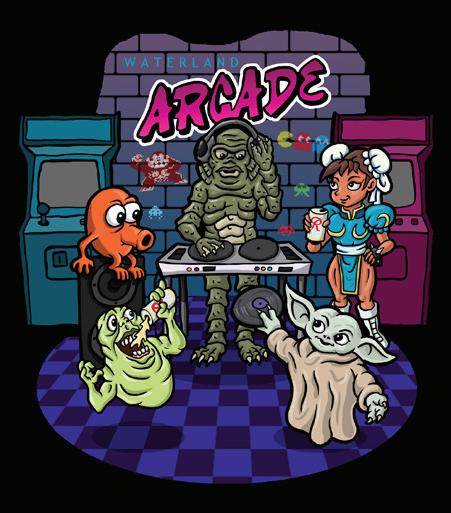




For Native Americans, the give and take of sacred breath
PLUS: Creating your own ‘Moth’ storytelling hour × Oral tales in education
Sharing family history through story × Family-friendly podcasts





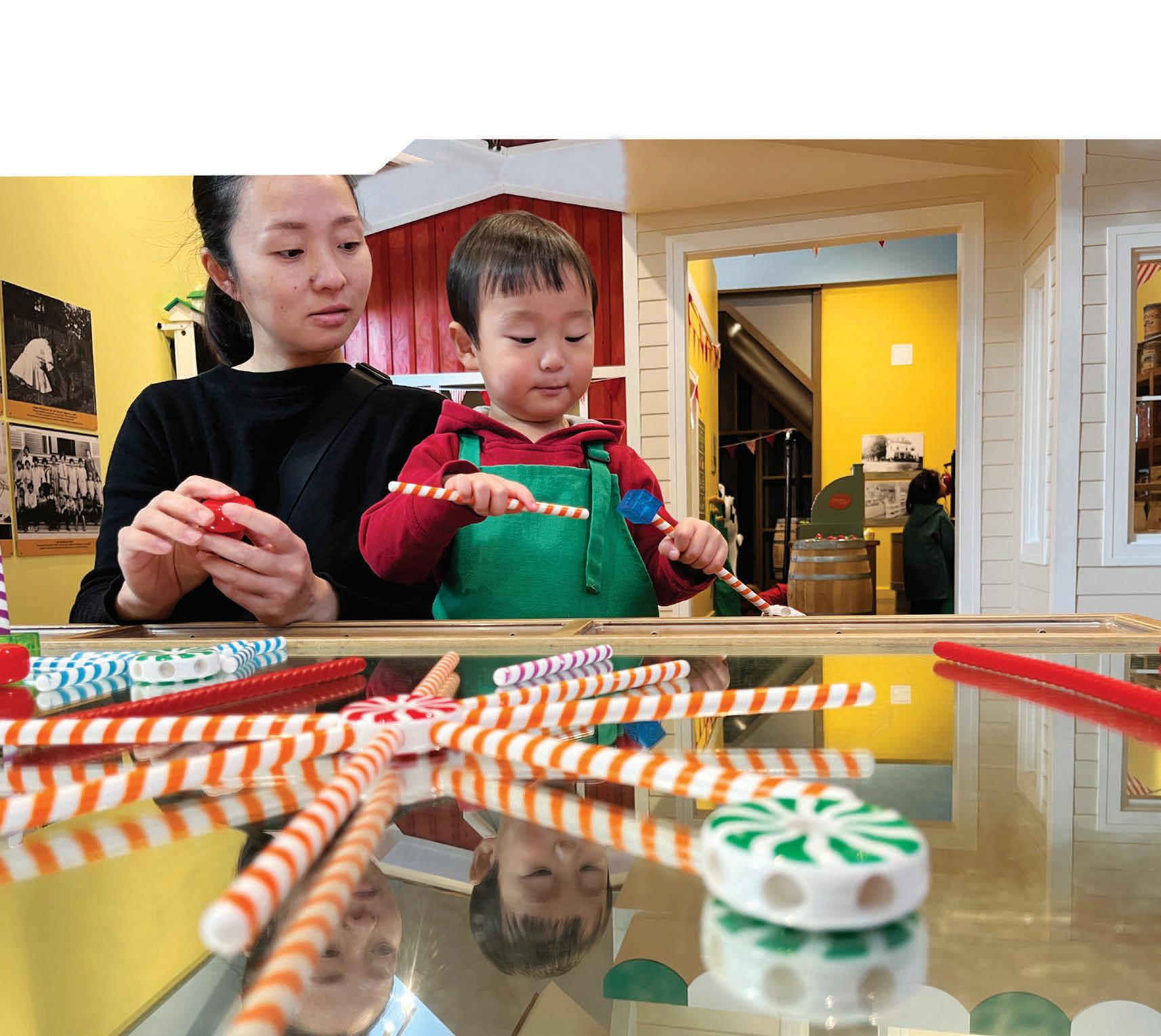

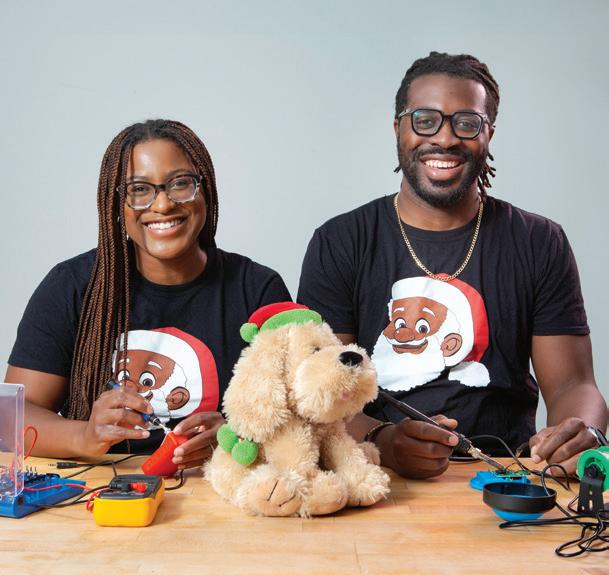
Free with admission, this candy oasis is taking over the entire Museum. MON, NOV 4, 2024– SUN, JAN 5, 2025
Gingerbread Workshops
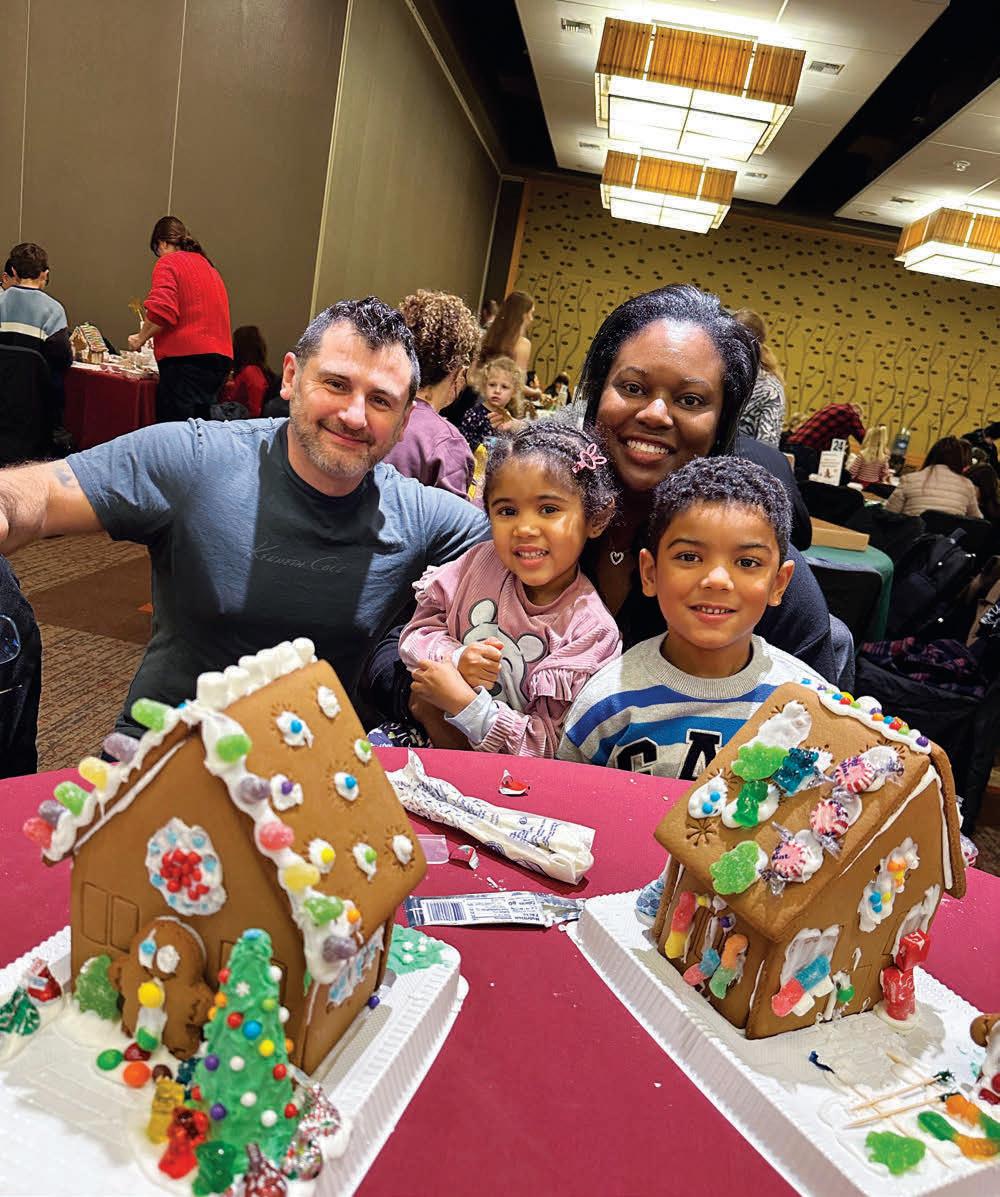

Create a gingerbread masterpiece and leave the mess to us! FRI, NOV 29, 2024: 1–3pm & 5–7pm SAT, NOV 30, 2024: 10am–Noon & 2–4pm
Gingerbread After Dark
Sip on seasonal adult beverages as you decorate. 21+ event. FRI, NOV 29, 2024: 5 –7pm
and Dancing
Pirouette with Flight Feathers Ballet during Nutcracker season! FRI, DEC 6, 2024: 6–8pm
Candy Science Workshop
Use the magic of science to create peppermint sticks & sweets. FRI, DEC 13, 2024: 5–7pm and SUN, DEC 15, 2024: 2–4pm
New Year’s Eve Countdown!
We will be jumping for joy at 10am, Noon, 2pm & 4pm. TUES, DEC 31, 2024: 9:30am–5pm
In downtown Bellevue! For more info and to purchase tickets, visit: KidsQuestMuseum.org



“Seattle is my town. I know this city inside and out… or so I thought until I had kids.”
Seattle’s Child is your guide to getting to know your city all over again. Finding things to do, places to eat, and how to get around — it’s a whole new ballgame with kids in tow. We’re interested in how parents make homes in a space-challenged urban environment, how families create community, and what parents are really talking about. Seattle’s Child reflects real Washington families and their broad range of parenting experiences.
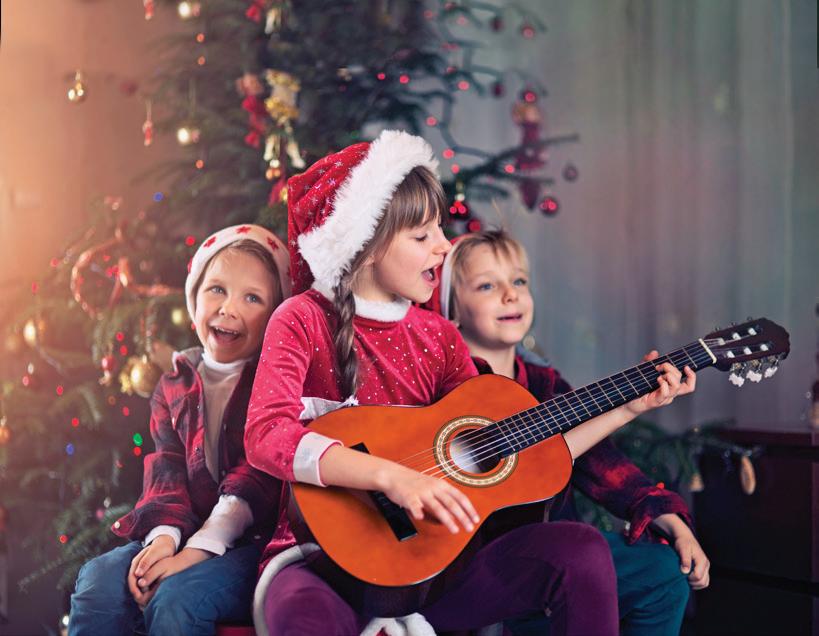
1 2
3
Dr. Sarah Bergman Lewis: Venting the pressure on parenting

by MELODY IP
For parents of color in the Seattle area, the local nonprofit Families of Color Seattle (FOCS, pronounced “folks”) has been a vital resource for navigating early parenthood, connecting parents, and providing a BIPOC-centered community. But, more and more these days, FOCS is known not only for its parenting groups and Facebook page but for its mission to dismantle
systemic racism. It’s a goal that steers all FOCS programs.
“We want to be known as this organization that’s doing advocacy work on behalf of the families that we serve — and with the families that we serve,” says FOCS Senior Community and Advocacy Manager Abbie Altamirano.
The organization’s main pillars of advocacy are educational equity, health equity, and
reproductive justice, but “antiracism is at the heart of what kind of advocacy work we want to do,” Altamirano adds.
An encampment in need of friends of color
Most recently, FOCS responded to the dire needs of approximately 200 asylum seekers living in squalid conditions at an encampment in Kent. The group recognized the inequities and injustices in the plight of immigrant families at the encampment — including
families from Angola, Congo, and Venezuela with more than 25 children between them. Their kids ranged in age from 4 months to 15 years. As fall approached, the Seattle Times reported that county and state funding for temporary housing for new immigrant families arriving in King County was stretched thin.
“It’s such a complex and heart-wrenching situation for all those families and especially


for the children,” says FOCS Executive Director Christine Tang. “No one sets out on a journey like this, braving the elements and criminal dangers, away from family, if their lives and well-being didn’t depend on it.”
As part of its support effort, FOCS and its member families gathered and delivered hundreds of dollars worth of donated essentials to the encampment families earlier this year.
“It’s
FOCS staff also spoke with parents in the encampment to assess their greatest needs and joined them at a recent Kent City Council meeting to urge local leaders to secure housing for families.

Their struggles hit home
The plight of the immigrants hits home for the FOCS staff, many of whom are immigrants or children of immigrants. FOCS program director Jesse Guecha was born in Colombia to a mother struggling to find work while raising two young children. Guecha was left at an orphanage and later adopted through a Seattle-based agency.
“As somebody who ended up here in the U.S., away from my culture, away from my language, away from my family — even though I was given a roof over my head and food — I wasn’t given the cultural and language supports that I needed,” says Guecha.
such a complex and heart-wrenching situation for all those families and especially for the children.”
—CHRISTINE TANG FOCS Executive Director
Brainstorming longer-term support
Following their initial action, FOCS leaders organized a brainstorming session with its members — parent group facilitators, teachers, and others—to develop a broader program to support camp families, including inviting partners from Union Cultural Center to teach capoeira, a Brazilian martial art combining dance, acrobatics, music, and philosophy in game form, to kids at the encampment. FOCS staff also collaborated with community organizations and individuals to help enroll children at six schools.
Then, without warning, the encampment was emptied by authorities in late September and most families and pregnant people were moved to longer-term housing. FOCS leaders say they aim to stay informed and continue supporting the families.
“So it really touches me to see these kids here.
Some have their family with them but don’t have their extended family, their village, language, and culture.”
FOCS staff members bring the same passion for justice and equity to the organization’s ongoing programs. At the same time, staff never assume they know what is best for FOCS families.
FOCS leaders do, however, recognize the power that parents have in advocacy. As the 2025 session of the Washington legislative session comes into view, FOCS is getting ready to push state lawmakers for secure family housing and alternatives to youth incarceration.
For that work, and for all its programs, FOCS relies on conversations among families, staff, and parent group facilitators.
“We started as a grassroots organization, and interpersonal connections are still one of the important things about FOCS,” says Tang.
by JEFF LEE, MD

Do you ever wonder why parents and their children are so good at pushing each other’s buttons? When I was a teenager, my mom used to say things that would seem perfectly innocuous to an objective bystander, but irritated the hell out of me. Of course, I assumed that was because she was just so annoying . . . until I had a teenager of my own. Suddenly it was me who was pushing my daughter’s buttons, and you can be sure she was just as good at pushing mine.
Looking back, it’s obvious that none of this was intentional. Neither of us had any interest in irritating or hurting the other — in fact, we were actively trying to avoid it. But this only made our exquisitely accurate button-pushing that much more confusing. One day, after we’d spent an interminable car ride poking at each other’s sore spots, I blurted out that I didn’t want us to do this to each other anymore. She looked at me with genuine surprise, and for a moment I thought I’d broken through. Then she shrugged and said: “You’re my father — this is how it’s supposed to be.”
I used to think that my mother and my teenage daughter had little in common. Eventually, though, I decided I was annoyed at both of them for the exact same reason. It was that way they had of stating a dubious and unsupported opinion with utter confidence, then defending it with complete certainty. But it took me years to realize the reason I found that behavior so irritating in them is that I found it even more irritating in myself. I had deluded myself into thinking I was the apple who had rolled away from the tree — but there I was, sitting right in its shadow. If your kid (or for that matter your parent) is really getting under your skin, here’s a thought experiment for you. Think of some tendency or part of your personality that you’re not proud of. Maybe it’s some flaw that’s been a part of you for a long, long time. Perhaps you were criticized for it when you were a kid. Or maybe it’s a defense mechanism that comes out reflexively, whenever you’re feeling scared or insecure. In any case, you know it’s not the best version of
you, and you’ve wished more than once that it wasn’t there. As a matter of fact, most of the time you pretend that it isn’t there. You convince yourself that you’ve overcome it, or that it’s not so bad, or that you’ve managed to keep it under wraps. Then, in a moment of stress or anxiety, it suddenly grabs your emotional steering wheel and swerves you into a ditch, and you’re left feeling embarrassed and ashamed.
Now, think of times when you’ve seen that same trait or behavior in someone else. How did you react? How did it feel to confront the thing you like the least about yourself in someone else? The odds are pretty good that your emotional gatekeeper quickly rerouted your shame and self-contempt onto that other person. Did you react more strongly than you should have? Did you end up red in the face or hot under the collar? Did it expose a big fat button that was just waiting to be pushed?
This could happen with anyone. It could be a store clerk or someone at the DMV. But with our families — the people who share our genes, our history and our daily lives — the chances that we’ll also share some unflattering traits is much greater. The stakes are higher, too. It doesn’t take much for the hidden shame we feel about ourselves to transform into a hidden shame that we feel about our kids. If they sense that shame, and they almost always will, they’ll internalize it. Then they’ll pass it on to your grandchildren. It’s the unwanted gift that keeps on giving.
Shame is a monster that we keep in the basement. We try to forget it, but it lurks in the shadows, licking its wounds and skulking around at the bottom of the stairs. It feeds on darkness, and grows stronger the more we pretend that it isn’t there. Even as we deny its existence, we live in fear of what it might do. Until we acknowledge it and force it out into the sunlight, we’ll keep seeing its image in the people we love, and keep coming after them with pitchforks and knives.
ABOUT OUR COLUMNIST
Jeff Lee annoys his daughter a little less every year, in Seattle WA


A guide for parents
by DR. SUSANNA BLOCK
Children have a huge variation in how they develop language skills. How do you know if your child’s speech patterns or breaks are a phase of development or something they may need extra help with? Let’s talk about what’s in the bell curve and when to seek more support.

It can feel alarming when your child stutters, lisps, or has other speech issues like dropping words or syllables. It’s helpful to know that these speech patterns are very common and often a natural part of developing language. For most children, it is temporary.
Childhood speech is different from adults — you’ve probably tried to follow along through nonsense baby babbles or when your 5-year-old retells the entire plot of a movie in one very long breath. Children gain speech skills by listening to others, having conversations, and exploring storytelling. Breaks or disruptions in the flow of speech, including stutters, skipping parts of words or lisps, are often a part of learning to communicate.
Lisping is very common in children 2 to 5 years old. Most children ‘grow out of it’ without speech therapy. If your child’s lisp persists beyond age 5, interferes a lot at an earlier age, or you have concerns about speech difficulties, talk to your clinician or a Speech-Language Pathologist.
Stuttering is also common in the 2- to 5-year-old age range. In fact, as many as 90% of children experience stuttering. At this age it’s typically developmental stuttering and may be because your child doesn’t yet have the speech and language abilities to say what they’d like to. Stuttering may show up as repeating words or syllables, talking very slowly, lack of pauses, or an uneven rate of speech. It can be more pronounced when your child is tired or stressed.
Some children barely notice stuttering or lisping, but for others, it can be a barrier to communication and can lead to insecurity. You can help your child’s speech development by encouraging them, modeling correct speech, and asking other adults,

such as caregivers and grandparents, to do the same. Here are a few tips:
• Rather than correcting your child or asking them to practice sounds, encourage them to talk and communicate in a non-stressful environment about fun topics.
• Try to understand what your child is working to say rather than asking them to repeat themselves. Listening to them attentively helps build confidence.
• Don’t interrupt them, instead, let them work to complete the thought or sentence themselves.
• Model the correct way to say the word, for example, repeat back, “you wanted the block?” You can also model slowing down speech.
• Talk openly about their stuttering or other speech issues if they bring up the subject.
If you have concerns or questions about your child’s speech delay or development, reach out to your clinician or a Speech-Language Pathologist at any time.
Speech disorders are different from language disorders — when a child has difficulty getting their meaning across or understanding the message from others. If you child has trouble relaying the message or receiving it, visit with a clinician to discuss approaches to language disorders. There’s a progression of speech development in all children but the pace can vary, not only from child to child, but your child might reach some milestones quickly and take more time to develop other skills. The important thing is being on track reaching milestones overall and reaching out to a provider if you have concerns or they need extra help.
ABOUT OUR COLUMNIST
Dr. Susanna Block, MD, MPH, is a pediatrician with Kaiser Permanente in Seattle and lives with her family in Queen Anne.
SPONSORED BY



October skedaddled out of here, leaving behind a trail of candy wrappers and a list of things to do for the upcoming holiday season. At my house, we begin celebrations by decorating our home. We hang evergreen wreaths on the door, dust off and set up our holiday village, weed through a tangle of lights and set aside the good ones for the trees outside, and then put together the tracks to a broken train car line that
The Polar Express™
All aboard the Polar Express for a 75-minute round-trip to the North Pole to see Santa Claus. Hear the story of the first gift of Christmas, have hot cocoa and cookies, and see the man in the red suit. Presented by The Chehalis Centralia Railroad. Weekends, November 9-December 22, 2 p.m., 4:30 p.m. and 7 p.m. $64 per person, kids 2 and under free.
Seattle Festival of Trees at the Fairmont Olympic Hotel
Celebrating its 47th year, the Fairmont Olympic Hotel will host gorgeous displays of more than 20 decked-out trees. The trees will be sold, with proceeds going to Seattle Children’s Hospital. November 21-December 2. FREE Enchant Christmas at T-Mobile Park
Enchant Christmas is home of the World’s Largest Christmas Light Maze experience. Set against the backdrop of a captivating original story, Santa’s Magic Timepiece, your adventure leads you through 80,000 square feet of breathtaking light sculptures. Check out the ice skating, children’s play place, and much more. November 22-December
barely moves, but no one wants to get rid of.
We keep up with tradition and choose the perfect tree, unlock a holiday box filled with ornaments, and share tidbits of stories about each treasure. There’s a purple plush elephant that my son hangs ever so carefully as we recount our trip to an Indian elephant rescue center — we remember how we rode on elephants there and were a little scared.
The holidays are a joyful time in our family — and I hope yours. With so many events around the Seattle area, there’s something to bring cheer to everyone. I hope you’ll find something your whole family will love.
— Jasmin Thankachen
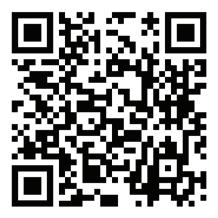
for more information about these and more holiday events.
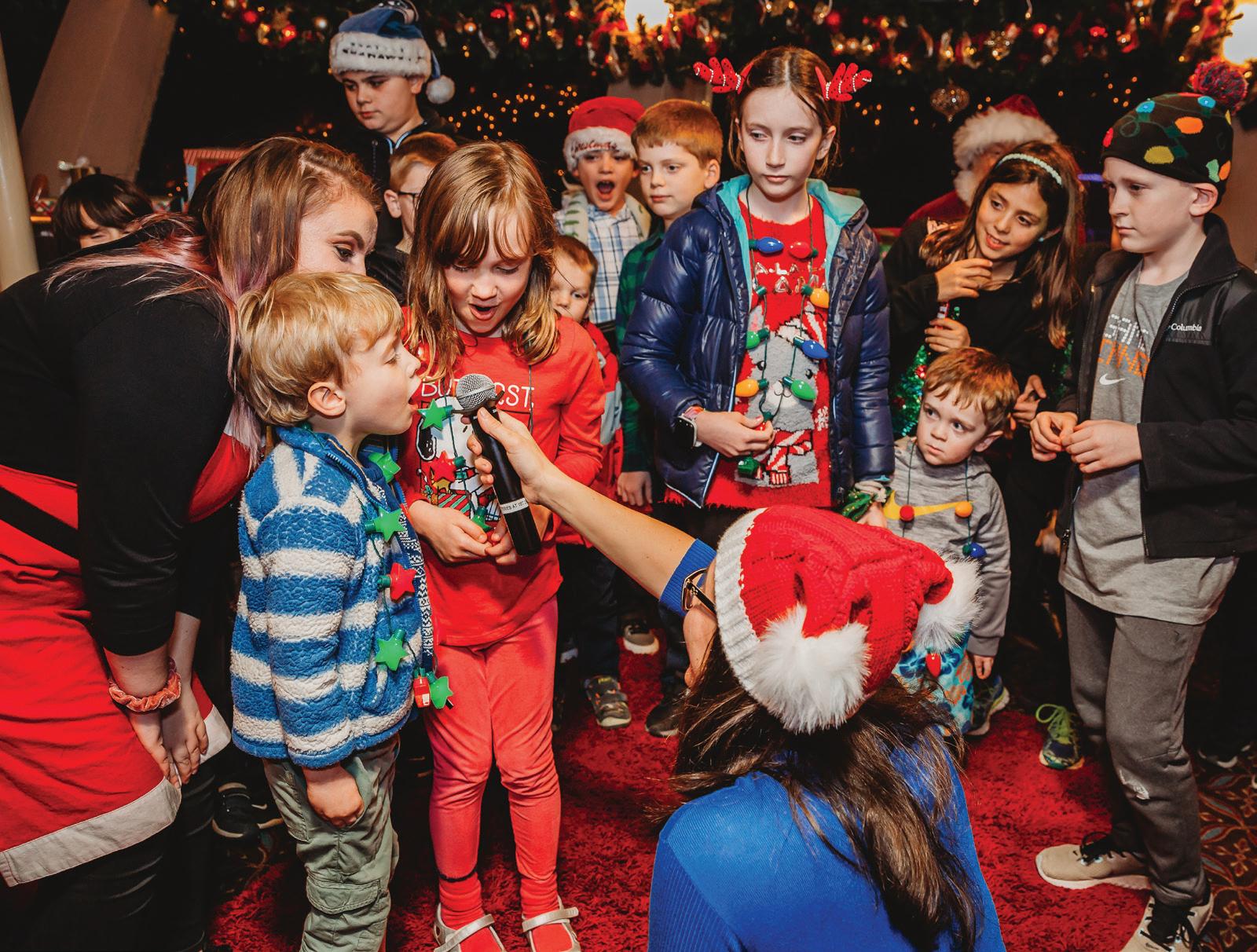
29. Ticket prices range from $27$50. Children ages 0-3 are free.
Christmas Ship™ Festival
Decked out in hundreds of lights, each sailing of the Christmas Ship includes a choir performance and a reading of “Twas the Night Before Christmas.” Prone to seasick-
ness? Watch from local beaches and shorelines as the ships cruise by. November 23-December 23. $35-76, kids age 3 and younger free. Preview nights are on November 23 and 24, and the official opening night is on November 29. Youth/kids sailings at 2 p.m.
Kringle Filling Station Play ski ball, join in holiday karaoke, engage in games, and more. Grab a cup of hot chocolate pumped from an old gas pump. November 29-December 30. Tickets sold online.
Seattle Winterfest
Kick off your holiday festivities with a trip to Seattle Center, where you’ll find a train village, a holiday market, and a variety of entertainment. Don’t miss the ice artists carving spectacular sculptures at the International Fountain on opening day. November 29-December 31.
Small Town Holiday at Lake Chelan
Lights at the lake, Santa sightings, holiday shopping, and winter sports include skiing, snowshoeing, sledding, and more — that’s what you’ll find at Chelan in Eastern Washington during the holiday season. November 29, 2024-January 1, 2025.
Snowflake Lane at The Bellevue Collection Snowflakes fall to the ground as a parade of costumed characters and magical floats glide down the street, spreading holiday cheer. Stake out your favorite viewing spot early in

the season and show up well before showtime. November 29-December 24, every night at 7 p.m. FREE.
KidsQuest Children’s Museum
Your little ones are invited to
Logical + Imaginative + Intense + Verbal + Observant + Hands-on
enjoy an array of workshops at the museum this holiday season. Make gingerbread houses, cook up an experiment that’ll produce a tasty treat, or join in an evening of dinner and dancing, celebrat-
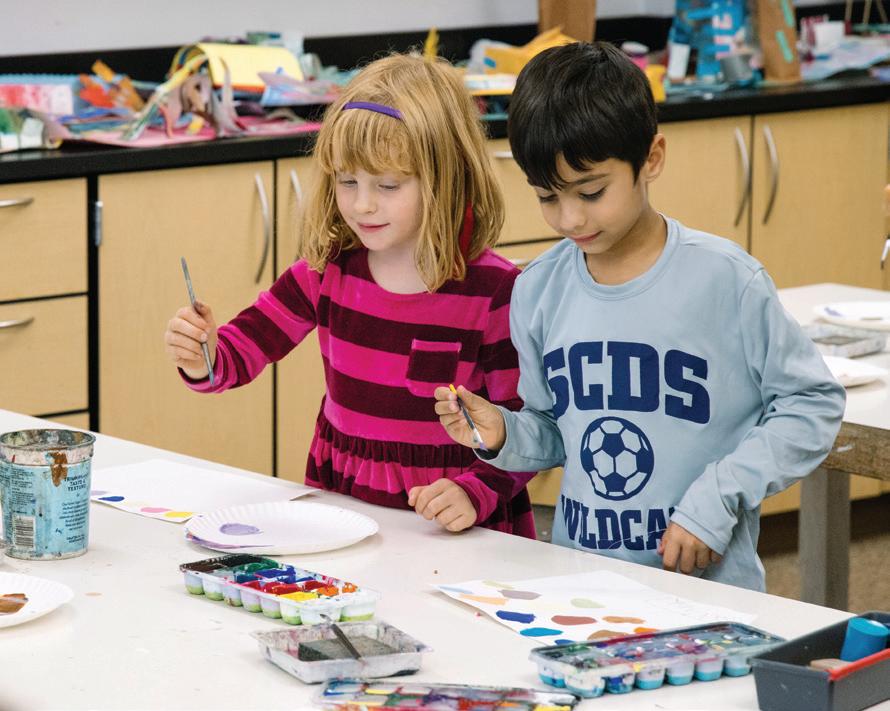
Gifted children exhibit these characteristics every day. Even so, many gifted students, especially children of color, remain overlooked in class. Not so at Seattle Country Day School. We offer our students an environment where they can ask questions, create, and grow intellectually and emotionally. See if SCDS is right for your child. Reach out today to admissions@seattlecountryday.org.
Seattle Country Day School For gifted children, K–8 Rooted in inquiry. Dedicated to equity. seattlecountryday.org/admissions
ing the Nutcracker season! Dates, times and prices vary. See website for more details.
Gingerbread Village Display
Visit the Sheraton Grand Seattle this year and see the spectacular gingerbread house village made by architects, master builders, and chefs. Displays can be viewed November 21, 2024-January 1, 2025. Sunday-Thursday 9 a.m.-9 p.m. and Friday-Saturday 9 a.m.-11 p.m. FREE, but donations help the Juvenile Diabetes Foundation.
The Northwest Railway Museum and holidays on the train
The 2-hour Santa Limited starts from North Bend Depot and takes kids to meet Santa. Weekends, November 30-December 22. Each child will receive a small gift and enjoy seasonal crafts. $39 per person (ages 2 and older).
Seattle Children’s Museum’s Rainier Ridge
Hit the slopes, spin on a sock skating rink, build snow people, and browse seasonal wares and crafts this winter during the Rainier Ridge event at Seattle Children’s Museum. November 20, 2024-January 27, 2025. Open 10 a.m.-5 p.m., Wendesday-Monday.
Family Preview Christmas Event at the Westin Seattle
Vote for your favorite of 12 designer-decorated Christmas trees at Family Preview, with Santa, festive entertainment, and free arts & crafts for kids. December 2, 4-7 p.m. FREE admission. They will be accepting donations of gently used clothing and canned goods.
The Great Figgy Pudding Caroling Competition
Head over to Pike Place Market and cheer teams of carolers roving the streets as they compete to raise money for the Pike Market Senior Center and Food Bank. More than 10,000 spectators are expected, so plan and get there early. Consider public transit. December 7, noon-2:30 p.m. FREE.
C-ID Santa visits Wing Luke Museum
Meet Santa in the historic Chinatown-International District. Pay homage and reconnect with a space that is the foundation of many cultures and heritages. The event is open, and welcome to all. Saturday, Dec. 14, noon-3 p.m. Advanced tickets are recommended. Each time slot starts at $14 and includes 1 physical photo and digital access. Additional prints cost $14 each (Museum members save 50% on prints).
Family Day: Holiday Celebration Join the White River Valley Museum
„
for their Family Day Holiday Celebration and spend the day with Santa for a fun-filled holiday-themed day. Pop by the museum to explore different holiday traditions from around the world. December 14, noon-2 p.m. FREE.
Issaquah Reindeer Festival
Kick off your holidays with this unique experience at the Cougar Mountain Zoo. Visit Santa, Rudolph, and all his friends. December 1-23. Santa goes back to the North Pole, December 26-30. Book online for timed entry; reservations open on November 1.
Holiday Magic at The Fair
Purchase your tickets to the Holiday Magic event at Washington State Fairgrounds and enjoy interactive exhibits, light displays, an ice rink, food, shopping, and more. December 6-23; select days. Purchase tickets online for the best pricing.
Holiday Barn Lighting
Join Kelsey Creek Farm for their Holiday Barn Lighting event. This event begins with holiday carols, sheep dressed up in lights, a visit from Santa, and a countdown to turning on the lights. Activities include a special, once-per-year opportunity to go inside the barn to watch the animals eat dinner. December 7, 5-6:30 p.m. FREE admission.
Bonsai Solstice
Take an evening stroll amid the soft holiday lights surrounding the Pacific Bonsai Museum’s collection of trees. Stay for holiday treats and more. December 14, 4-7 p.m. The event is FREE; a donation is suggested and welcomed.
Diving Santa at the Seattle Aquarium
Santa doesn’t just fly with his reindeer. He also dives into the deep. Watch him swim gracefully in the 120,000-gallon Window on Washington Habitat at the Aquarium. He’ll stop at the window for photos and to wave hello. November 30-December 22, 11:30 a.m. and 2:30 p.m., every Saturday/Sunday, with special appearances on November 30th and December 24th. Event included in price of admission.
Teddy Bear Suite at the Fairmont Olympic Hotel
Snuggle in with some cuddly bears for a picture-perfect holiday outing. Every year, in partnership with Seattle Children’s Hospital, the Fairmont fills a hotel suite with teddy bears. November 29, 2024-January 2, 2025, 10 a.m.-5 p.m. FREE
Wild Lanterns at the Woodland Park Zoo
The creators of Wild Lanterns have put together a brand-new show this year, and the event promises to dazzle visitors with large light displays and interactive areas. November 15, 2024-January 19, 2025. Prices vary by day, peak weekend is $39.95/adult and $34.95/child (3-12), 2 and younger free. See the website for hours and more details.
Fantasy Lights at Spanaway Park
Cozy up in your car as you drive through more than 300 elaborate displays with thousands of sparkling lights. Choose a weekday, early in the season, to avoid crowds. Holiday showing begins November 29, 2024-January 5, 2025, 5:30-9 p.m. $15-$20. Watch for $10 discount days.
Village of Lights: Christmastown
Drive over to Leavenworth, where the town celebrates the holidays with over half a million lights, music and entertainment, holiday characters, kids’ activities, roasted chestnuts, Santa photos, and more. November 29-December 24. FREE.
Zoolights at Point Defiance Zoo
With over a million lights, the Point Defiance


Zoo transforms its exhibits and pathways into a sparkly winter wonderland with lighted classics like the octopus, flame tree, and tiger face. Don’t forget to meet the groovy goats, then warm up around the fire while roasting s’mores. November 29, 2024-January 5, 2025, 4:30-10 p.m., $7-$20, children 2 and younger free.
Light it up
Rain or shine, head to your local tree-lighting ceremony. Watch a parade, sip hot chocolate, and catch the magic of holiday displays. Arrive early to stake out a prime spot for viewing. Dates and times vary by location (check out displays in Snohomish, Mountlake Terrace, Woodinville, Bothell, Kenmore, Auburn, and Lakewood). Google your city and the word “lights” (Ex.: “Woodinville Lights”) for dates and times. FREE.
Swansons Nursery
Wander in the garden to enjoy a magical holiday outing replete with thousands of glowing lights. Don’t miss the model train village or a visit with Santa. November 9-late December. FREE.
Lights of Christmas at Stanwood
Located an hour north of Seattle, this drive-thru light show in Stanwood is a must.
CONTINUED ON NEXT PAGE >

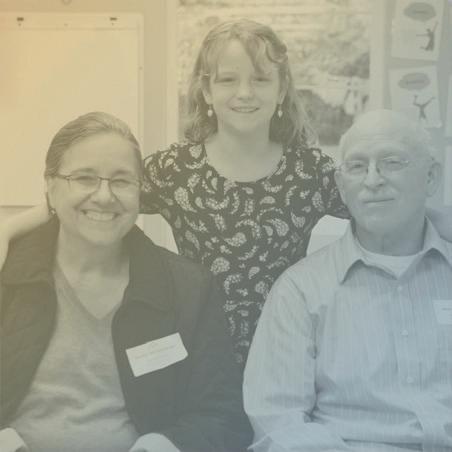

As you drive, turn on the radio and listen to the display guide, Bruce the Spruce, as he takes you through each light display. Two activity stops along the route, Joyland and Santa’s Village, include fun activities for the whole family, photo ops and snacks. November 29-December 29. $40 per car. Bellevue Botanical Garden presents Garden d’Lights
As you follow the pathways through the garden, you’ll discover a variety of brightly lit displays, plant and animal shapes, rock formations, butterflies, bees, and birds. Be prepared: It’s a 1-mile walk. November 30-December 31. $8/person, children 10 and younger free. Watch for $5 nights, weekdays, during the show’s first two weeks.
Evergreen Christmas Lights
A Bothell tradition: Hun-
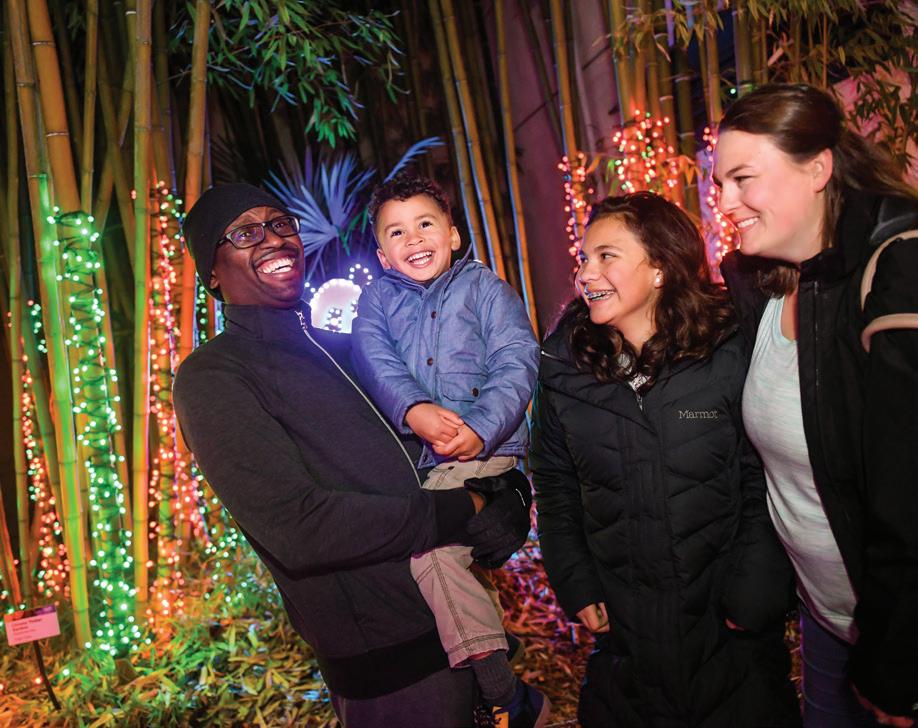
dreds of thousands of lights will cover an entire church building and will be synchronized to music. Stop into the pavilion for warm cookies, treats, a winter village, and a train exhibit. December 1-24, 6-9 p.m. FREE Wintertide Lights
Head to the Evergreen Arboretum and Gardens
in Everett to experience a wealth of twinkling lights. Admission is free, December 1-31. This year’s event will include a gazebo luminary installation crafted by artist Cindy Morris and a Solstice Luminary Walk on Thursday, December 21st, from 5-7 p.m., with complimentary luminary bags and story time in the gazebo.
SeattlesChild_VillaAacademy_2024-November.pdf 1 10/15/24 10:23 AM
Seattle Children’s Theatre
“The Snow Queen”
Enter the world of ice and snow in SCT’s adaptation of Hans Christian Andersen’s tale, “The Snow Queen.”
It’s an unforgettable adventure across singing flowers, leaping reindeer, and unsolvable riddles. Ages 6+. November 27, 2024-January 5, 2025. $25.
Seattle Theatre Group
“Nutcracker Magical Christmas Ballet”
Featuring gifted dancers and artists from around the world, this classic holiday story includes jaw-dropping acrobatics, larger-than-life puppets and a hand-crafted, one-of-a-kind set. November 17, 1 p.m. and 5 p.m. Starting at $30.
ACT
“A Christmas Carol”
Enjoy the 90-minute story of Ebenezer Scrooge and the visitors that lead him to gratitude and giving at the Allen Theatre. Suggested for children 5 and older. November 29-December 27. Prices vary.
Pacific Northwest Ballet
“George Balanchine’s Nutcracker”
The classic holiday story of Clara and a nutcracker that comes to life, featuring Tchaikovsky’s magical music. November 29-December 28 at McCaw Hall. Prices vary.



The Trans-Siberian Orchestra
The orchestra is back at Climate Pledge Arena. This year’s show, “The Lost Christmas Eve,” is a story about the importance of community. Expect an all-new, dazzling show packed with pyrotechnics, lasers, and story-telling. Shows are on November 23, at 3 p.m. and 7 p.m. Prices vary.
Taproot Theatre:
“A Charlie Brown Christmas”
This musical version brings the cartoon classic to life. It will be performed from December 5-28, and prices will vary.
Cirque Dreams Holidaze at Paramount Theater
Imaginative fun for everyone is waiting at CIRQUE DREAMS HOLIDAZE, which features a world-renowned cast of performers accompanied by an ensemble of aerial circus acts, sleight-of-hand jugglers, fun-loving skippers, breath-catching acrobatics, and much more. December 6-7. Friday at 7:30 p.m. and Saturday at 11 a.m. and 3 p.m. Ticket prices start at $39.
Magical Strings Annual Celtic Yuletide Concert
The Boulding Family’s musical celebration of the holiday season is a

treasured tradition and afternoon of enchanting Yuletide music in Kent. Pam and Philip Boulding perform on Celtic harps, hammered dulcimers, whistles, strings, percussion, and harp-like instruments from around the world. Guests add Irish step dancing, drumming, and storytelling for a festive and memorable performance. December 8. $20-$30.
Seattle Symphony:
Family Movie & Live Music
Celebrate the holidays with your family and the classic children’s film The Snowman (rated G) at Benaroya Hall, Seattle. This festive concert also includes other musical holiday favorites! There will be pre-concert activities one hour prior to the performance. December 14, at 11 a.m. Ticket price $30-$40. Seattle Men’s Chorus: “Ho Ho Ho”
Seasonal classics, Christmas comedy, and a dizzying array of dancing Santas. This year’s lineup includes an abbreviated show (December 21) specifically for children. The one-hour show accommodates those with shorter attention spans, with extra dancing to get the wiggles out and an extended sing-along with general admission seating. December 21, 11 a.m. Starting at $40.
Cirque du Soleil presents KOOZA
Give the gift of theatre and purchase tickets to an amazing acrobatic show. KOOZA comes to Marymoore Park’s Under the Big Top in the new year. Take advantage of the family offer now. The show runs January 19-March 2, 2025. See the website for more details.


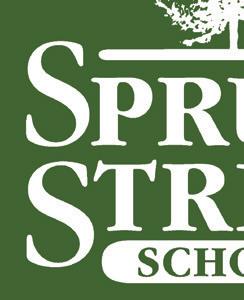









Goldfish Swim School
swimshoreline@goldfishss.com (206) 866-2849
goldfishswimschool.com/shoreline
Give the gift of swimming this holiday season. Goldfish Swim School’s holiday packages are perfect for children ages 4 months to 12 years and are the gift that keeps on giving - every week!
Dive into swim lessons with a 4 or 8 swim lesson bundle and some FINtastic Goldfish goodies to wrap for your kiddo.
Visit the Goldfish - Shoreline website or reach out to their front desk to purchase.

Poulsbo Candy Shoppe
18961 Front St. NE, Ste. 105 Poulsbo, WA 98370
poulsbocandyshoppesweets.com
Experience the magic of the holidays at Poulsbo Candy Shoppe! Visit our charming store in historic Poulsbo or shop online to discover old-time holiday candy and vintage sweets that will transport you back in time. From nostalgic treats to stocking stuffers, we have everything you need to bring excitement to your family’s holiday season. Treat yourself to our homemade fudge and hand-crafted candies for an extra special holiday experience.

MOHAI
mohai.org/join-and-support
Give the gift of history this holiday season with a MOHAI membership!

With unlimited access to our compelling exhibits, engaging events, and exclusive member benefits, a MOHAI membership is the key to unlocking a world of discovery. It’s a gift that will inspire, educate, and create lasting memories.
Get your MOHAI membership today and make this holiday season unforgettable.
Clover Toys
4609 14th Ave. NW, Ste. 103, Seattle, WA 98107
(206) 782-0715
store@clovertoys.com
CloverToys.com

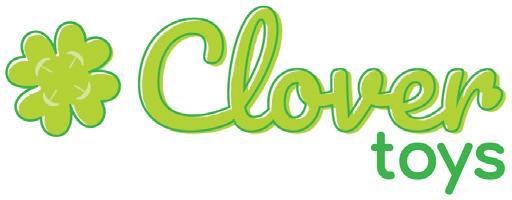


CloverToysSeattle • @clovertoys • clovertoys
At Clover Toys, we believe in inspiring creativity and sustainable play. This Black Friday, enjoy 25% off Grimms 60 Colored Geo-Blocks—perfect for imaginative building! Plus, buy one Holiday Palm Pal and get the second 50% off. These adorable plush friends make excellent stocking stuffers. Shop small, spark joy, and find the perfect gifts for the little ones in your life! Visit our store or website to make your purchase today.





Robot vs Sloth
1535 1st Ave., Seattle, WA 98101
robotvsloth.com
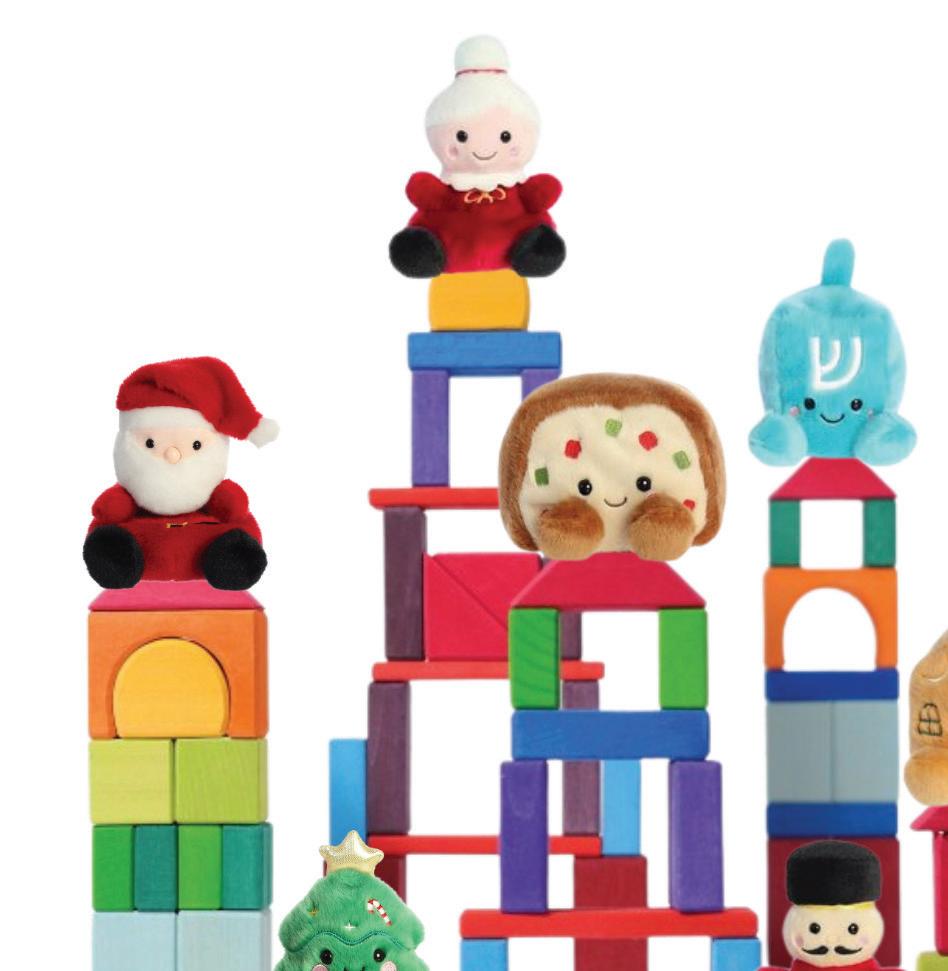
Burn both energy and calories before indulging in holiday treats this season. Get the whole family out to run or walk at one of many turkey trots and holiday runs around the Seattle area. Event prices vary.
November 17, 2024
⋅ Tacky Turkey Sweater 5K
November 23, 2024
⋅ Carnation Turkey Trot
November 28, 2024 (Thanksgiving)
⋅ Magnuson Series
⋅ Auburn Turkey Trot
⋅ Thanksgiving Day Apple Cup 5K
⋅ Woodinville Turkey Trot
⋅ Tacoma City Turkey Trot
⋅ Issaquah Turkey Trot


Facebook and Instagram: @robotvsloth
Love sloths? Crazy for robots? Like cute animals fighting each other? Robot vs Sloth tees are perfect for anyone in your family! Designed by Seattle artist La Ru, screen printed locally in Seattle on super soft tees. Available in adult, youth, toddler and onesie sizes for $25 - 34. Robot vs Sloth is located in the historic Pike Place Market and features art and gifts by 45+ (mostly local) artists.
⋅ Mukilteo Turkey Trot
November 30, 2024
It’s the last lap of the Seattle Kids Marathon. Participation in this annual event includes running, reading books, doing good deeds, and eating right. Register now and watch them take their ‘final lap’ in person at Seattle Center. FREE.








Gobble Wobble Turkey Trot at Lincoln Park. Offers a family run (1 mile), 5K, 10K and half marathon. Prices vary.
December 7, 2024






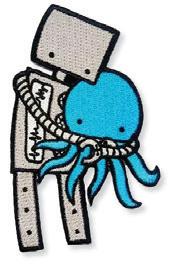




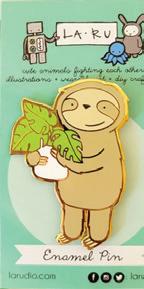
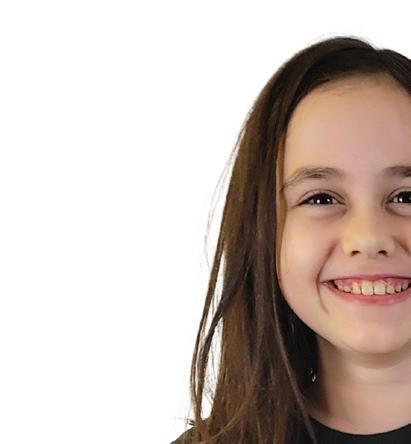






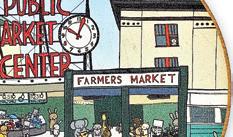

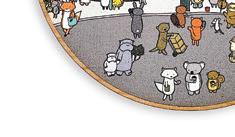




Wear your holiday attire and join the Electric Cookie Run around Green Lake. Then, collect your medal and eat fresh-baked cookies from local bakeries. Register online.
December 8, 2024
Get your bells on for the annual Jingle Bell Run. Get into the spirit of this fundraiser by wearing a favorite holiday costume and shaking your bells the whole way. Festivities begin at 8 a.m. All proceeds go to the Arthritis Foundation. Register online.
December 15, 2024
⋅ Chase the Grinch Outta Snohomish Fun Run
⋅ 12Ks of Christmas
December 21, 2024

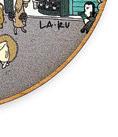



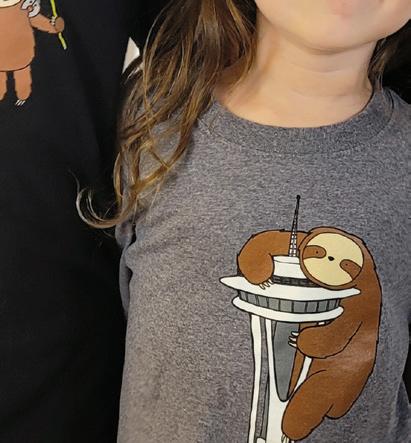

⋅ Magnuson Series Holiday Fun Run
December 24, 2024
Christmas Eve Ugly Sweater 5K Run/Walk and the Elf (Kids’) Dash. Kick off your Christmas Eve with this family-oriented romp. Holiday inflatables, Santa’s house, and the arrival of Jolly Old St. Nick add to the holiday cheer. Register online.

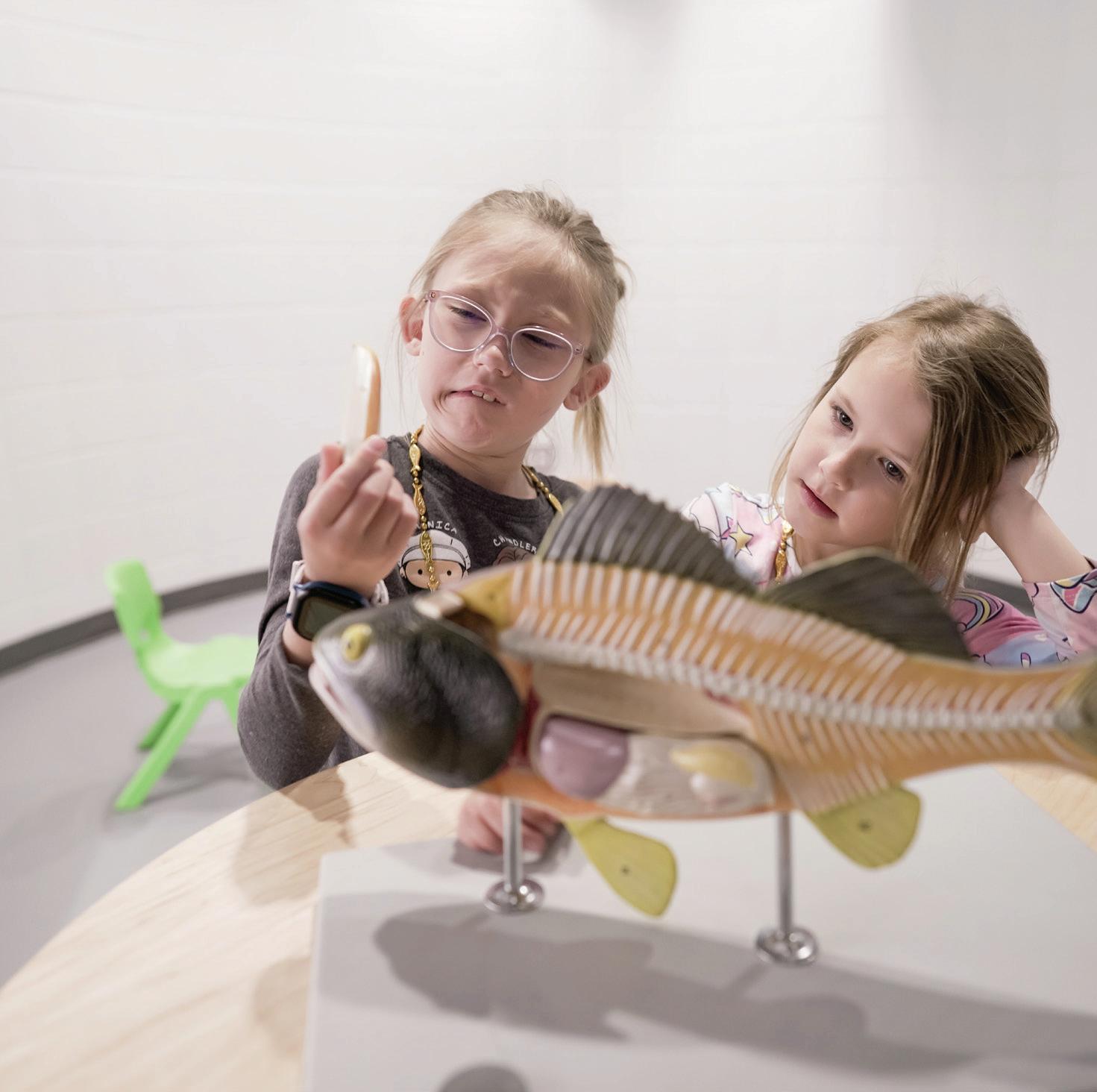

A Victorian Country Christmas is returning to the Washington State Fair Events Center, transforming the venue into a magical winter wonderland. This beloved holiday tradition offers something for children and adults alike, with hundreds of unique vendors, captivating live entertainment, and festive attractions. December 5-8. Tickets $10-12. Kids 11 and under are free.
Bill and Melinda Gates Foundation Discovery Center: Giving Marketplace
Find unique gifts from dozens of vendors, with the proceeds supporting immigrants and refugees, women and girls, global health, education, the environment, and much more at the Bill and Melinda Gates Foundation Discovery Center. Enjoy family-friendly holiday activities and performances. December 6-7. FREE.
Browse the aisles of vendors, snack at food shops, and support local businesses. November 2, 9, 16, 23 and December 7, 14, 21, 2024. See website for more information. City of Renton Holiday Bazaar
Rocky Reach Discovery Center
Open 9:30 a.m. – 5 p.m., Tuesday - Saturday
Located seven miles north of Wenatchee on Hwy 97A | | |
Get a head start on your holiday shopping and support local artists. Featuring handmade, upcycled items for purchase. More than 7,000 visitors are expected, so be sure to get there early for the best selection. Renton Community Center, November 22-23.

Crossroads Bellevue: Makers Market
The Makers Market features an array of gifts made by local artisans. Spend the day shopping, listening to live music, enjoying foods from around the world, and more. November 23. FREE.
Nordic Museum’s Julefest:
A Nordic Christmas Celebration
Wander through the museumturned-market, as you explore Nordic dance, treats, and music. Shop for one-of-a-kind gifts for loved ones. Celebrating its 47th year, the Nordic Museum hosts more than 30 local retailers and artists while exposing visitors to Nordic holidays and traditions. Experience traditional foods, live music, and more. November 22-24. Members: free, Non-members: $10, ages 12-18, $5, 12 and younger free. Ticket includes admission to the museum.
Holly Jolly Holiday Market
Featuring more than 80 vendors, food trucks and more! This is a great place to start your holiday shopping and support your local community at Thomas Family Farm in Snohomish. November 29-30, 10 a.m.-4 p.m. There will be food and espresso trucks on site, and Santa will be visiting on Friday. FREE admission.
Bellevue Arts Museum: Holiday Art Fair
The BAM Holiday Arts Fair 2024 is a brand-new event hosted by the Bellevue Arts Museum. It will bring the magic of the holidays and the arts together for the first time. Visitors will enjoy a carefully curated selection of handmade art, perfect for holiday gifting while supporting local artists. The fair will be held from November 29December 22.
Holiday Farmers Market and Crafts Fair at Third Place Commons
Grab your grocery bags and head to this market just in time for Thanksgiving. A great place to buy your produce and other supplies for your holiday meals, then browse the selection of handmade items. November 24 and December 15, 10 a.m.-2 p.m.
Seattle Christmas Market
Inspired by traditional German Christmas markets, this monthlong celebration takes place at the Fisher Pavilion and South Fountain Lawn at Seattle Center.


Browse aisles of artisan crafts, gifts, traditional food and drink, interactive installations, seasonal decorations, and more. Join the event newsletter for more details. The Christmas market will be closed on November 28. November 21-December 24. Tickets required, prices vary. Kids 6 and under are free.
Magic in the Market
Make memories at Pike Place Market, with over nine acres of shopping and holiday cheer. Snap a photo with Santa, enjoy DIY kid’s crafts, live holiday music, and much more! November 30, 11 a.m.5:30 p.m. FREE.
Urban Craft Uprising: Winter Show
Located at the Seattle Center Exhibition Hall, this winter show is dedicated to local artisans and crafters. Find decor for your home, a unique gift for a loved one, or explore the latest trends in art. December 6-8. Friday is a preview ticketed night with free admission on Saturday and Sunday.
Annual Winter Festival and Crafts Fair
The Phinney Ridge Neighborhood Association will be spreading holiday cheer with this year’s holiday market, and artists will share their unique gifts for purchase. Also included: a quilt raffle, card art sale, entertainment, and good eats. December 7-8, 10 a.m.-5 p.m. $4-$6.
United Indians Native Art Market
Head over to the Daybreak Star Indian Cultural Center for the annual Native Art Market. A variety of Native American art, jewelry, crafts, textiles, and other authentic gifts will be on display and for purchase. Free entry, but go early because parking is limited. November 23-24 & December 21-22, 10 a.m.-5 p.m. FREE.
Holiday Market at Carnation Farms
Visit the Holiday Market at Carnation Farms and enjoy hot food and drinks from the culinary team, take a history tour around the main grounds with their archivist, snap a selfie in the holiday-themed photo booth, and pick up winter decor from their local artisan vendors. You’ll find homemade soaps, clothes, art, sweets, gifts, and more to bring in the season! December 14, 10 a.m.-4 p.m. FREE entry.

Seattle farm-to-table Chef Bonnie Rae is extending the thanks this Thanksgiving. Rae is offering Thanksgiving meal kits that include all the essentials for a festive feast, from traditional turkey to delectable sides and desserts. A portion of the proceeds will go to the non-profit Westside Baby, which provides more than 120 local social service agencies with baby diapers, clothes, gear, and more for lowincome families. Order meals online at 3BonnieRae.co. Meals will be delivered to your doorstep on November 27th, with easy reheating instructions. For more information on how you can help Westside Baby, go online to 3westsidebaby.org or call 206.767.1662. —Cheryl Murfin
As parents, we all have those toys in the house.
They may be in the back corner of a closet because our kids have outgrown them or on a high shelf because they are still popular playthings but drive us up the wall by the end of the day. Then there are the toys with tiny buttons and little switches designed for small fingers to push. Toys that light up, beep, dance in place, or roll along the floor.
If they are finished serving time in your family, consider giving these latter toys — the ones with the buttons, switches, noises, and movements — a chance with another child. Join a workshop to adapt them for children who otherwise would not be able to play with them.
Addressing a toy challenge
In its second year, Tevin’s Adaptive Toy Drive gives a second life to toys — or, in the case of brand-new toys, an adapted life — for kids who cannot push small buttons or flip switches due to motor-functioning challenges or sensory issues. Those challenges can make it difficult

or impossible for children with conditions like spina bifida, Down syndrome, spinal cord injuries, or dexterity and mobility impairments to trigger the lights, noises, and motors of toys using the mechanisms
Cierra Milton and Terrell Glenn will host the adaptive toy workshop in December and say they are on a mission to give people the skills they need to adapt toys on their own for
kids with different abilities. This year, Tevin’s Adaptive Toy Drive takes place on Saturday, December 14, at Byrd Barr Place. Families are welcome to sign up and participate.
Glenn says there are always things kids can help with, like unscrewing battery packs and snipping wires.
A couple on a mission
Developing the adaptive toy workshop has been a longtime goal for Glenn, a hardware engineer at Microsoft, and Milton, an occupational therapist at Harborview Medical Center. Glenn’s younger brother Tevin, the drive’s namesake, has cerebral palsy. Glenn says he grew up watching his father disassemble toys and rewire them to levers and buttons large enough for Tevin to manipulate.
“I would take (Tevin’s) hand and help him push the buttons,” Glenn recalls. “The same toys that I used to play with, now he could too.”
During the event, participants will learn how to dismantle and rewire electronic toys. Glenn and Milton
Want to make a difference in a child’s life? Help adapt electronic toys for children with dexterity, motor functioning, and sensory challenges. Bring new and gently used electronic toys to adapt to larger controls. Don’t have a toy? Join anyway — there will be ways to help. Kids are welcome.
• Where: Byrd Barr Place
• When: December 14 from 10 a.m. to noon
• Register: Go to 3Eventbrite.com and search for Tevin’s Adaptive Toy Drive
will provide instruction, encouragement, and all the tools necessary — through the generous support of the NE Seattle Tool Library.
“We’ll meet you where you’re at,” says Milton, “and you’ll learn a new skill . . . you just never know when it might be useful in your community.”
Increasing awareness
The toys adapted during the drive will be donated to children with disabilities through groups like Boyer Children’s Clinic, Haring Center for Inclusive Educa-
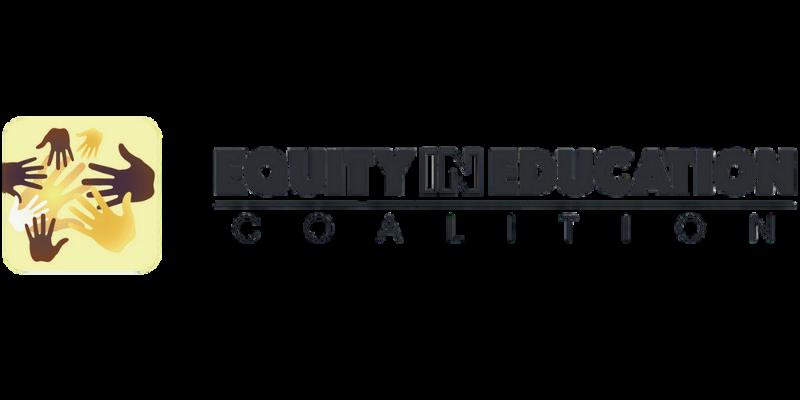
tion, and the Down Syndrome Center of Puget Sound.
The couple also hopes that participants will leave with an increased awareness and appreciation for the experiences and difficulties of people with disabilities.
“We’re trying to make this a low-barrier environment,” says Milton.
“Just come with enthusiasm,” adds Glenn.
Increasing access and skill
Adapting toys is not only about equal accessibility, says Milton. Actions like pushing a

button and hearing a stuffed toy laugh or speak teach all children about cause and effect, which is the basis for many other skills. Therapists like Milton work to help their patients develop these skills.
Glenn and Milton point out that not all parents have the confidence to wield a soldering gun to adapt a toy. Moreover, companies that market adaptive toys and switches often charge $50-$80 for what Glenn’s dad did for $5 in a short time.
The couple hopes to see at least 25 participants at this year’s adaptive toy drive. They hope to adapt and donate dozens of toys. Eventually, Glenn and Milton plan to launch a non-profit organization and hold drives and workshops throughout the year.
Every child, they stress, should have toys they can enjoy, and interact and play with, adapted to their needs.

The Lake City Holiday Project (LCHP) needs your family’s help providing holiday gifts to children in low-income families in North Seattle — just as the organization has been doing for 35 years. Here’s how you can help:
• Sponsor a child or children as a family.
• Donate cash for the purchase of gift cards.
• Volunteer as a family to sort, bag, and transport gifts.
• Take and fulfill a toy drive request. Beginning in midNovember, several local businesses will host giving trees.
Find the list of participating giving tree businesses and information on all family volunteering opportunities at 3mc-care.org/mccare/ projects/holiday.
—Cheryl Murfin
Alliance for Education alliance4ed.org info@alliance4ed.org
509 Olive Way, Ste. 500, Seattle, WA 98101
The Alliance for Education is the independent, local education fund partnering with Seattle Public Schools since 1995 to address crucial challenges facing students, families and educators. Our mission is to support excellence in education by advancing educational justice and racial equity for students in Seattle Public Schools.
With the support of our community, we accomplish big things for our students, having raised over $200M the past 30 years. Our work is designed to create a better public education system that allows all Seattle students to thrive by:
• Raising funds for initiatives that advance equity for students like the founding of the Office of African American Male Achievement.
• Recruiting, preparing and retaining high quality elementary and special education teachers for students in Title I schools impacted by poverty with the Seattle Teacher Residency.
• Covering the costs of basic needs like clothing, meals and shelter for students and families through the Right Now Needs Fund.
• Awarding quality principals and educators that are advancing educational justice each year with $75K in grants.
• Serving as a fiscal sponsor for 175 school organizations, like PTAs, helping them fundraise for their schools and programs.
Support our school district and the impact of our work: alliance4ed.org/give.
Pictured: Nova High School Principal Eyva Winet receiving the 2024 Foster Award
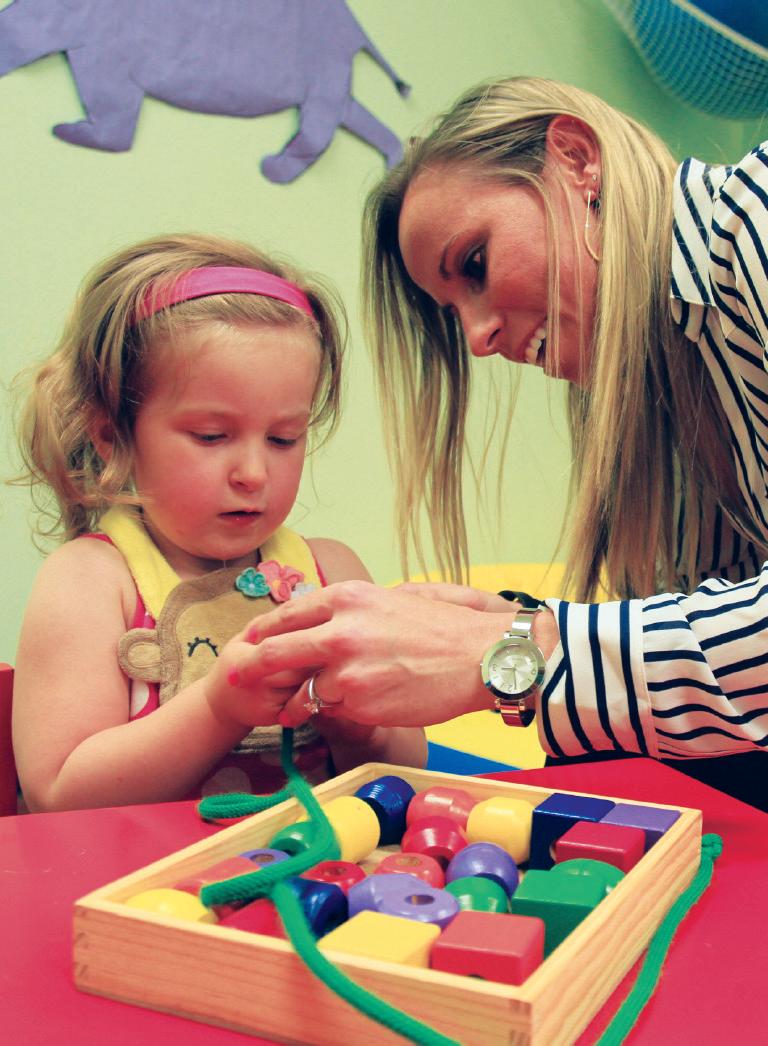

Locations in Bellevue, Bothell and Lakewood, WA (425) 502-9440 • info@colehealth.com
ColePediatric Therapy is part of the Cole Health family of companies, offering a range of services including Speech, Occupational, and Physical Therapy across our 23 locations, with three facilities conveniently located in Bellevue, Bothell, and Lakewood, Washington. Our experienced team of therapists serve children of all ages and abilities, creating a collaborative and comprehensive plan, enabling families to reach their fullest potential.
Since 2001, Cole Pediatric Therapy has been committed to serving our communities and transforming the lives of families near and far. Owned and operated by clinicians, we recognize the importance of early intervention in a child’s development and are committed to assisting those in need with a compassionate, patient-first approach.
Your child is unique and so are we. Start your journey with us today and experience the impact of the Cole Difference!
‘
On the art and tradition of Native American storytelling
by ELIZABETH HUNTER photograhs by JOSHUA HUSTON
Something happens when a person hears the words once upon a time, a long time ago. They shift into a different state of consciousness. Their senses activate. Their breath changes.
That exchange of breath between listener and storyteller, says Roger Fernandes, an artist and educator of the Lower Elwha S’Klallum tribe, is called the Sacred Breath.
“Essentially, the sacred breath is what you breathe out when you’re speaking, and the audience breathes it in and gives it life. Stories are living things.”
Fernandes didn’t start out as a storyteller. He grew up hundreds of miles away from the Lower Elwha Klallam reservation. He wanted to be an artist.
However, the Indian Education Act of 1974
went into effect shortly after he graduated college, so he applied and took a job at Highline Schools. There, amidst his young students, the power of storytelling took hold.
“If you look at Native children in public schools, they tend to struggle,” Fernandes explains. But it’s not for lack of potential — studies showed Native children entering Kindergarten were bright, sociable, eager to learn.”
One semester, Fernandes accompanied a Native storyteller around the school, classroom to classroom. He heard the same stories 10, 20 times, and thought about all the research that showed children learn through story, fantasy, and play.
“All at once, my path became clear. That’s what I’m going to do,” he recalls. “I’m going to tell Native stories to Native children. I am going to tell them the stories of their ancestors.” And that’s what he did for the next forty years.
The meaning of the universe and the meaning of life
Oral storytelling is fundamental to many Native American cultures.
The Salishan languages in the Pacific Northwest were spoken languages, so oral storytelling served as a connective tissue, binding cultural values, history, tradition, and philosophy into an art that is both entertaining and educational.
Most traditional oral stories are open for interpretation. According to Mary Jane Topash, a member of the Tulalip Tribe and assistant director for cultural initiatives at Seattle’s Burke Museum, each story offers many takeaways, and listeners’ interpretations change over time, as they grow up.
“I got to listen to traditional stories as a child, but as I got older, I realized some of the stories I had heard over and over again started to mean something different,” Topash says. “It’s the same story [you’ve] heard dozens of times, but the understanding changes.”
Many traditional stories are origin stories meant to elucidate how the world came into existence. Instead of avoiding heavy philosophical questions, Fernandes embraces them — and so do his young listeners.


STORY:
Told by xwqid b, William Shelton, extended by the Lushootseed Department
Along time ago, when all the animals were still human beings, the sky was very low. It was so low that the people could not stand up straight. Every time they tried to do so, they would bump their heads. They called a meeting together and discussed how they could raise the sky, but they were at a loss how to do so. No one was strong enough to lift the sky.
Finally, the idea occurred to them that possibly the sky might be lifted by the combined efforts of the people if all of
them pushed against it at the same time. But then the question arose of how it would be possible to make all the people exert their efforts at exactly the same moment. For the different peoples would be far away from one another. Some would be in this part of the world, and some in another part. What signal could be given that all people would lift at precisely the same time? .
To hear and read the rest of the story:
“Some of these stories talk about existential stuff — about the meaning of the universe and the meaning of life. But little kids love that kind of conversation, and they’re anxious to have it,” he says. The tradition of oral storytelling offers children perspective on the world in which they live.
Many Coast Salish tribes even share certain stories, although each culture has its own version.
Cynthia LaPlant, a member of the Puyallup Tribe, teaches at the Grandview Early Learning Center, where she first started learning the Coast Salish language Lushootseed as a student almost twenty years ago.
The story of Lady Louse, for example, is told in Tulalip, Puyallup, and other Coast Salish tribes. LaPlant says the story “is different for each tribe, but the essence is the same because the storytelling tradition means each story is unique.”
Stories evolve as time goes on, she says. “Nothing is set in stone, and you’re not supposed to correct people. It’s one of my favorite things about the language.”
Indigenous storytelling in the age of TikTok
The intersection of oral storytelling and modern technology is both exhilarating and discouraging.
Thanks to the Internet, young adults like LaPlant can share and discover stories
from all over the country. In fact, LaPlant discovered storytelling nights on Facebook Live before attending in-person storytelling events.
Technology also enables parents and caregivers to introduce storytelling to small children through digital media. Jill LaPointe, of the Upper Skagit/Nooksack, is the senior director of the Indigenous Peoples Institute at Seattle University and director at Lushootseed Research, a nonprofit dedicated to preserving and sustaining the Lushootseed language and culture.
One evening LaPointe and her husband were listening to an audio recording of her favorite storyteller, Johnny Moses. Her grandson, just five years old, came into the room, sat down, and listened — mesmerized — to the entire story.
“It totally amazed us,” says LaPointe. But still, she worried something was missing
Nothing is set in stone, and you’re not supposed to correct people. It’s one of my favorite things about the language.
CYNTHIA LAPLANT A MEMBER OF THE PUYALLUP TRIBE

through virtual storytelling.
Historically, the winter months were a sacred time when Indigenous families and communities would spend hours telling stories and building relationships, explains LaPointe.
“The storytellers that I was brought up with would often pause and wait for the audience to say ‘habu,’ which kind of means ‘I’m engaged,’” she says. “It was a relationship.”
Topash agrees.
“Hearing a story in the longhouse, surrounded by family and community — you can’t get that on paper or on a screen,” she said.
“These days, technology is so powerful that people watch entire ‘live’ performances on tiny screens — and they may not even know what they are missing.”
Words trapped on a page
Over the past decade, Coast Salish tribes have translated their language into the written word — devising an alphabet, transcribing stories, and developing teaching materials for the next generation.
“Having it recorded, written, and saved, of course, is a huge goal, and important,” says Topash. “But you lose some of the magic, some of the animation. If the characters walk, the storytellers walk; if the animal jumps, the storyteller jumps.”
“It’s one thing to type in ALL CAPS,” she says,“but if the story called for the character to yell, the storyteller would actually yell.”
Reading is usually a solitary endeavor, says Fernandes. “It’s an internal process.”

Written stories also rarely change — occasionally, nonfiction books are updated for the era, but for the most part, once published, a fictional story remains the same forever.
“I love to read,” says Fernandes. “But that story is trapped in the pages of the book. It never gets the chance to transform.”
“Storytelling comes from the memory of the teller.”
For years, Native Americans have fought to reclaim their cultures and traditions from people who sought to exploit them. In her role at the Burke Museum, Topash tries to bring awareness to these complicated and sometimes fraught situations.
Though she embraces the significance of digitizing Coast Salish stories and traditions, she worries: “Sometimes all this access makes me nervous. I don’t know if people understand how important these stories are.”
Non-Native listeners must remember that even if they are entertaining, Indigenous stories are sacred.
Vi Hilbert was a leader in the movement to reclaim Lushootseed language and traditions. She was also LaPointe’s grandmother and Fernandes’ teacher. She taught Fernandes that the word for storytelling in
Cynthia LaPlant tells the students at the Grandview Early Learning Center a story.


Lushootseed is “sy hubtxw,” which means “the teachings.”
“Storytelling is not entertainment, even if it is entertaining, and it’s not fanciful. It is how you teach children and each other,” he said.
How to appreciate Indigenous storytelling, not appropriate
Consider as well that many Native elders were forced into boarding schools and punished for speaking their language. Even though LaPlant’s family was proud and supportive of her learning Lushootseed, hearing the language her great-grandfather was forced to abandon can be painful.
Topash offers some insight into how to
appreciate and not appropriate Indigenous oral storytelling. First and foremost, give credit and credence to the tribe from which the story originated. Throughout his work, for example, Fernandes names his teachers and honors their gift of storytelling.
Well-meaning educators should consider how to properly include the storytelling tradition in curriculums. Topash often hears teachers ask their students to “write their own origin story like the story they just heard.”
She says this trivializes the significance of Native stories.
“These stories are ancestral,” Topash says. “They come from something: an event,
November is Native American History Month, a great time to explore Native American culture, including food, traditions, and traditional storytelling. Here are a few opportunities to do just that:
Watch videos and listen to recordings of Coast Salish stories:
• Tulalip Stories: 3tulaliplushootseed.com/stories
• Puyallup Stories: 3puyalluptriballanguage.org/storytelling
• Muckleshoot Storytelling: 3wearemuckleshoot.org/storytelling
Watch and listen to young Tulalip storyteller Jacynta Myles-Gilford as she shares Tulalip stories at Hibulb Cultural Center. 3vimeo.com/319504081
Listen to Raven and the Box of Life, a story passed down by the Tlingit people of the Pacific Northwest and told by several storytellers on the Smithsonian’s Sidedoor podcast. Google: Smithsonian Raven and the Box of Life.
Listen to Cherokee storyteller Robert Lewis as he spins stories about animals that talk, a bag of fire ants, and secret dancing superpowers for The Smithsonian’s Sidedoor podcast. Google: Smithsonian Cherokee Story Slam.
See “The Aunties” at The Moore Theater on November 20: The Aunties honors the women that shape, heal, and uphold Indigenous communities — the aunties — through an evening of contemporary storytelling. Storytelling is honored as a living art form that continuously shapes identity, facilitates healing, and builds solidarity across and within communities. November 20, 7:30 p.m. Tickets $15-$40. Get ticket at 3stgpresents. org/events/the-aunties
Watch videos about the Lushootseed language at 3puyalluptriballanguage.org.
Storytelling is not entertainment, even if it is entertaining, and it’s not fanciful. It is how you teach children and each other.
ROGER FERNANDES A MEMBER OF THE LOWER ELWHA S’KLALLUM TRIBE
an understanding, an interpretation. So don’t appropriate the process for a lesson plan. Honor the tradition and the tribe, don’t try to make it your own.”
Instead, ask students to research their own origin story — where did their ancestors come from? What event or experience in their past might be worthy of a story? This way, students can honor the art of storytelling without appropriating it.
As long as birds are flying
Native American storytelling is a tradition that offers listeners the chance to see their world differently. It can enthrall the squirmiest of children and edify the most erudite adults.
“In 40 years, I’ve never had a classroom that was rude or disengaged,” says Fernandes. In fact, he says, “every now and then I get a bit of wisdom from a little kid, a comment that is just so profound, it changes the way I understand the story.”
Storytelling can be a way to speak to children in their language. Fernandes gives the example of a child who comes home from school and says to his mother: “My teacher says the Earth is spinning in space, how can that be true?”
Perhaps this mother tries to explain the force of gravity. But to a 5-year-old, those are just words. What that child is asking, Fernandes says, is “am I going to go flying off the earth?”
That’s when a story comes in. Because, says Fernandes, all that little boy wants to know is that he’s safe.
“So tell them when the birds fly, their wings push down the air, which keeps us here, so as long as birds are flying we’ll never fly off the earth,” Fernanes says.
When they get a little older you can tell them about gravity.


by CHARLENE DY // photograh by JOSHUA HUSTON
On a cloudy morning at the Seattle Waldorf School, second-grade teacher Laura Cox draped a shawl over her shoulders and lit a candle. Standing in front of a darkened classroom, she recited:
“Quiet your voices, be still every tongue, And fix on me deeply your eyes.
For out of my heart a story will come, Ancient, lovely, and wise.”
With no book or script to guide her, she recounted the birth of Prince Siddartha. Her students sat rapt as she told of his birth in a garden in India,
then how, as a child, he rescued an injured swan.
In the Waldorf tradition, storytelling is foundational for almost everything from math and science to classroom management.
In middle and upper grades, a chemistry lesson might begin via a biography of the French chemist Antoine Lavoisier to provide context, and quadratic equations might be taught alongside an introduction to Muhammad ibn Musa alKhwarizmi, the Persian polymath considered the father of modern algebra.
Waldorf educators intentionally select folktales, fairy tales, legends, and biographies from
all over the world.
“It acknowledges the wisdom of other places and peoples when we can draw globally on those who have influenced us,” says Cox.
While Waldorf schools do incorporate illustrations, objects, and text in storytelling, at first, most stories are shared orally — or, in Waldorf terms, they “tell stories by heart.”
“We want that human-to-human engagement,” says Seattle Waldorf’s Grade School Director Dru Smith-Crain. Without pictures or videos to guide them, students use their imaginations by creating images in their minds.
“This promotes flexibility of thinking, it helps to build memory, and it fosters in us a stronger sense of curiosity and wonder about things,” says
Smith-Crain.
From a research perspective, Dr. Trina Spencer, a University of Kansas professor, has shown that for elementary students, skills in oral academic language are directly related to literacy, a.k.a. reading and writing. Students’ listening comprehension significantly predicts their reading comprehension, and skills in speaking in turn foster writing performance.
At Eastside Christian School, Sundee Frazier teaches middle school English and creative writing and finds a link between her faith tradition and teaching.
“Jesus taught using mostly stories: it’s effective pedagogy!” says Sundee. “Stories stick with us much longer than facts or statistics because they’re imbued with emotion.”
Traditionally, her 7th graders write personal narratives as one of their major projects. This year, however, Frazier says, “I’m going to ask them to step it up a notch. They’ll take that written piece and then we’re going to transform it into an oral piece that they’ll present to their classmates.”
Why the change? An opportunity for connection, student-to-student.
“I think so many of the world’s problems could be solved if we had more connection to one another as human beings who have similar struggles, similar fears, similar challenges,” says Frazier.
She hopes that when students hear each others’ stories, they’ll realize how much they share.
“We love to tell stories, we love to hear stories,” says Frazier, who is also a novelist. “That’s how our values are shaped; that’s how we transmit cultural values, standards, and norms.”
Since 2015, storytelling to transmit cultural values has been allowed in public schools in Washington State. That’s the year Senate Bill 5433 codified teaching Native American history, culture, and government in public schools.
We love to tell stories, we love to hear stories.
That’s how our values are shaped; that’s how we transmit cultural values, standards, and norms.
SUNDEE FRAIZER MIDDLE SCHOOL ENGLISH TEACHER AT EASTSIDE CHRISTIAN SCHOOL
In Auburn School District’s student body, more than 70 tribes are represented. Because of Auburn’s location on historical Muckleshoot land, stories and teaching from that tribe are highly valued as part of the district’s curriculum.
Although in-person storytelling is celebrated at larger school- or district-wide events, Robin Pratt, the district’s Native American Education Coordinator, encourages teachers and students to access storytelling resources digitally. The Muckleshoot
CONTINUED ON PAGE 28 >







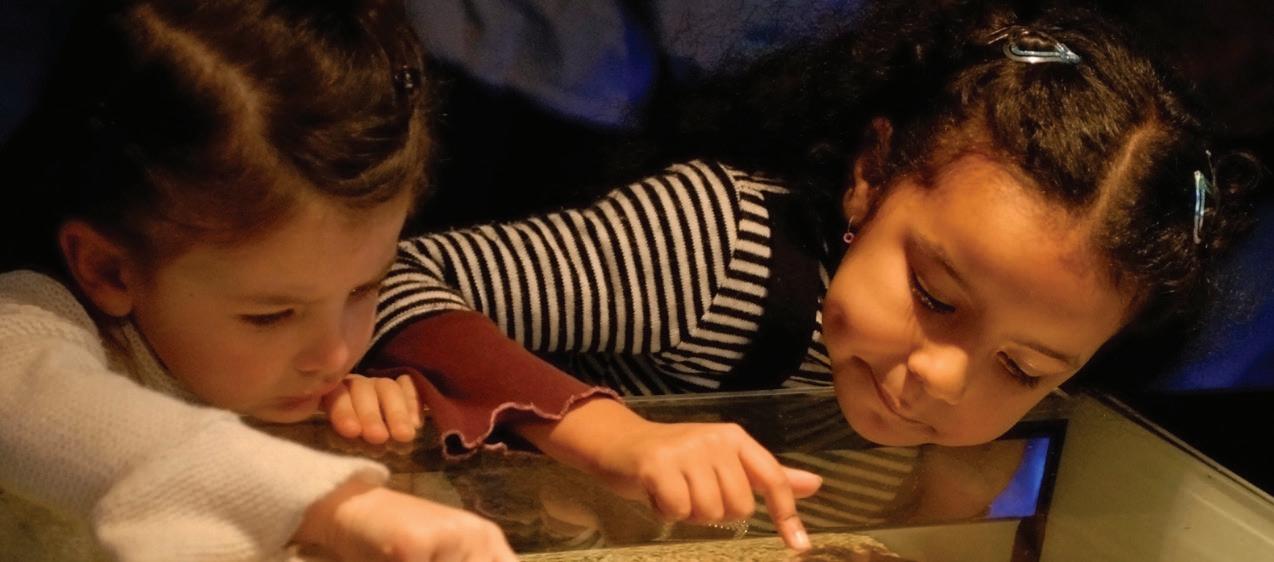

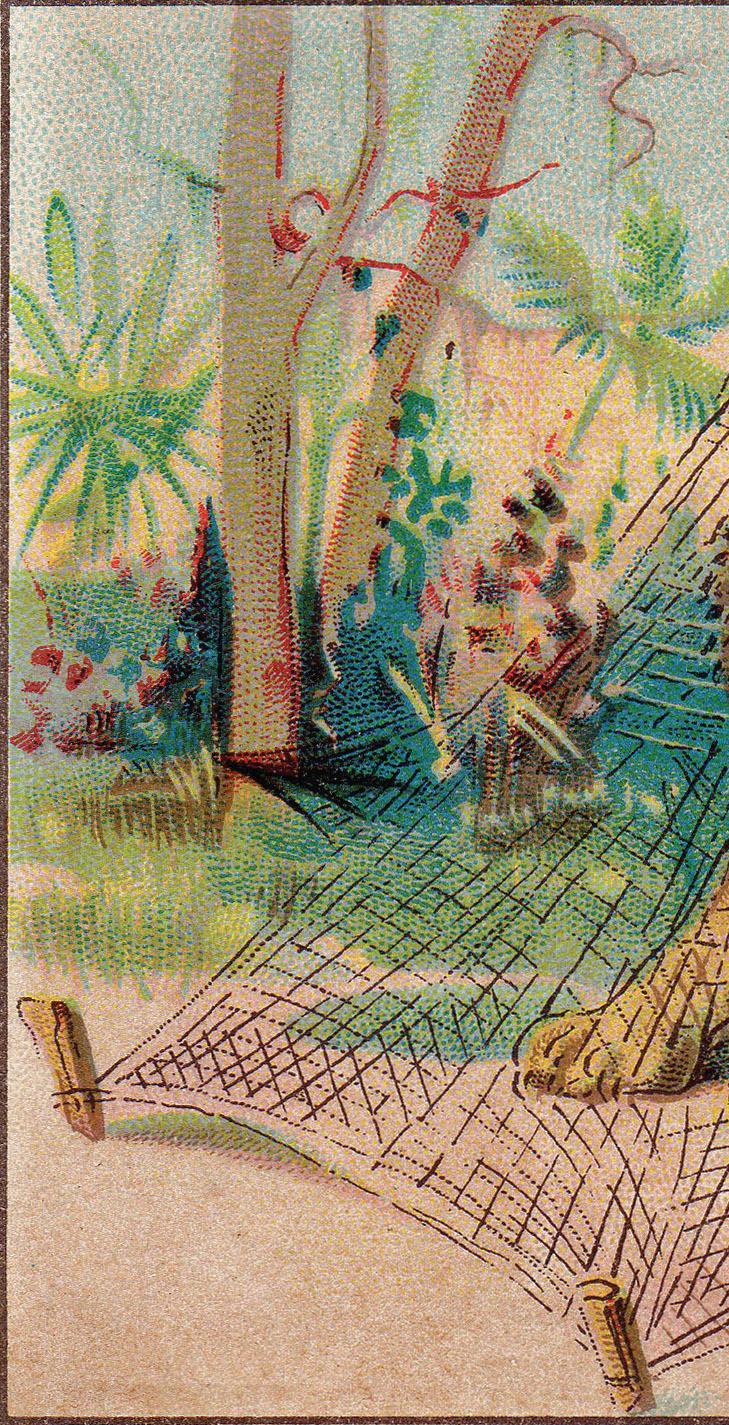

As told to her 2nd grade class by Seattle Waldorf teacher Laura Cox
A lion awoke after a long nap, well really a long sleep. He had slept away most of the day, nearly 22 hours! He was hungry and went out hunting, seeking food. Despite his best efforts, he was coming up empty-handed. He could not find a fox, nor a marmot, nor a rabbit, not even
CONTINUED FROM PAGE 27 >
tribe has worked with multimedia specialists to produce a wide array of videos, including stories about canoe journeys and salmon.
Pratt embraces the videos as authentic examples of Muckleshoot storytelling.
“They’re telling their story and these are the authorized pieces that you can use,” says Pratt. “They created it. And that’s how they want it represented.”
Back in Cox’s classroom, Waldorf students revisited the birth of Siddar-
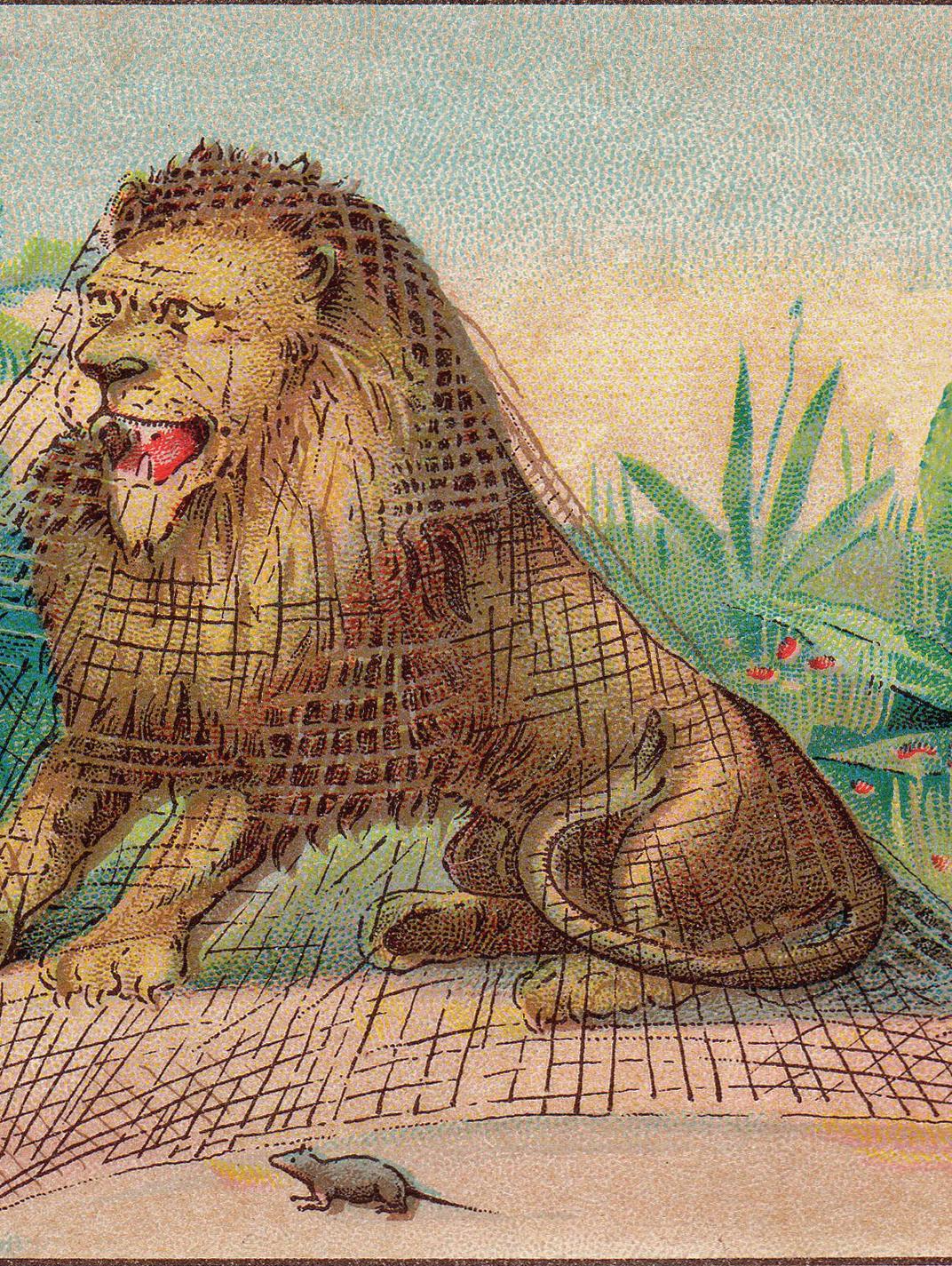

a little squirrel to sate his hunger and fill his belly. Finally, he heard a rustle in the buses and pounced, stepping right on the tail of a little mouse.
The mouse trembled and quivered, knowing it was about to become dinner. She begged the lion not to eat her, explaining that she would hardly sate his hunger, and not even be worth the effort. She was too small to be a decent snack, never mind a meal. If he would consent to let her go free, she would owe him a life debt. Since he saved her life, she would dedicate herself to him and do him a favor whenever he might ask . . .
tha again and again over several days. While doing so helps grow academic skills like narrative cognition, story sequence, and writing, Cox says she also employs the legend for loftier goals.
The story might open a discussion on being kind and loving, for example, or support a debate on ethics and morality when considering Siddartha’s response to witnessing others suffer.
“We’ll learn how to be human,” she says. “How to be a member of a community. How to take up the challenges in the world that face us.”



































































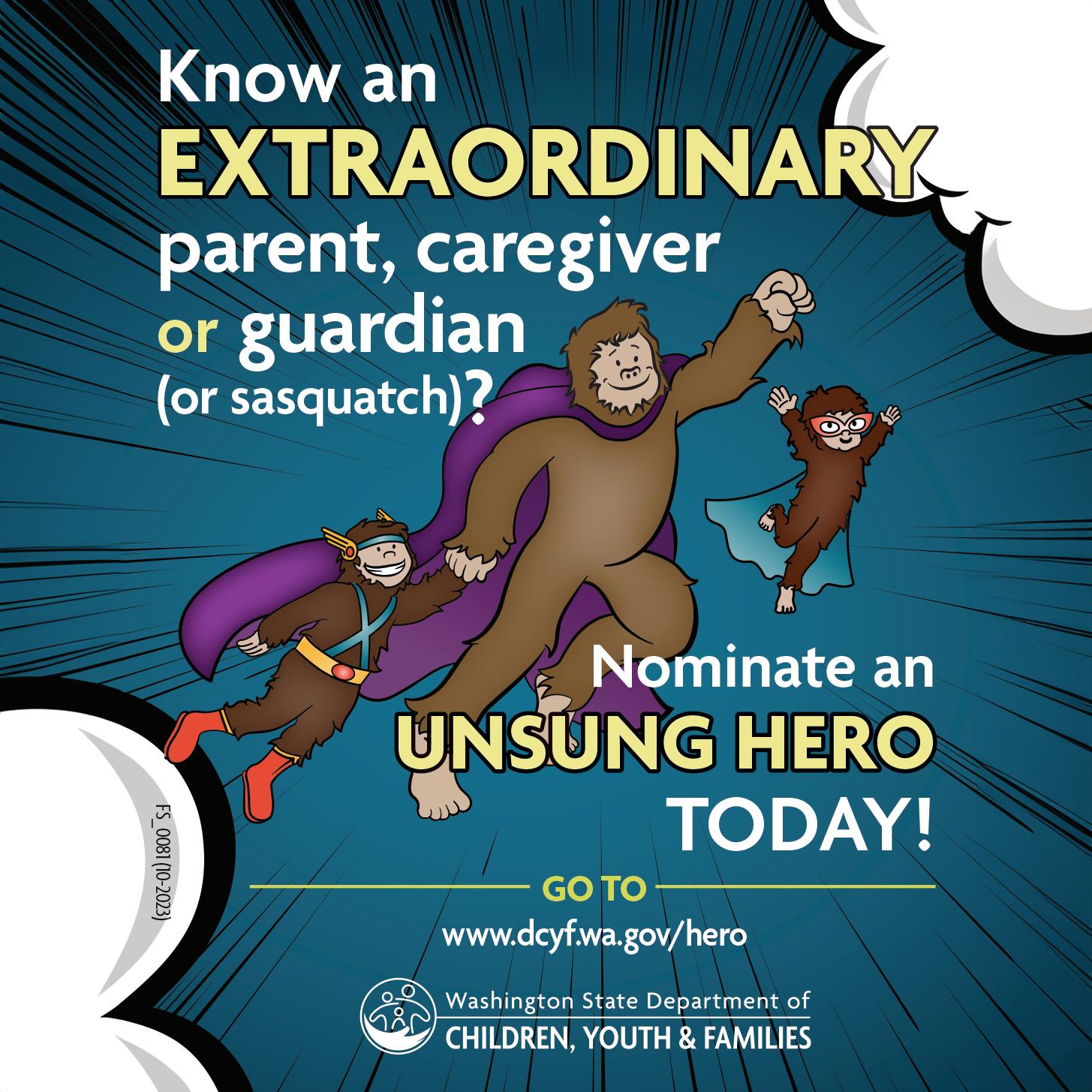
by CHERYL MURFIN
“When I was …”
Those three words have launched thousands of stories on The Moth Radio Hour, the juggernaut storytelling show that began on national public radio nearly 30 years ago.
Since then, The Moth has collected over 50,000 oral stories from ordinary people (kids and adults alike) across the planet. Not to mention, it’s inspired many a Friday night notes-free oral storytelling memory for families like mine.
From the silly to the serious, our family has “mothed” our experiences across the dining room table for years. We glued ourselves to The Moth on most Sundays when my kids were tweens and teens. The stories were often riveting and led to in-
teresting post-show discussions. A new species of moth
So, what is a Moth story? The concept is simple: Stand up in front of your audience and tell a 5-minute story. The rules are simple too — even a young child can be a moth:
• The story has to be true
• No notes! The trick is to practice telling your story aloud.
• The story must have happened to the storyteller (i.e. it’s not about someone else).
• It has to relate to a chosen theme.
• It should last no more than six minutes. Five minutes is the goal, but there’s a one-minute buffer.
To understand how The Moth story sessions go, head to
KUOW radio on Sundays from 1-2 p.m. when the station airs The Moth Radio Hour.
“Mothing” at home
The Moth provides an excellent framework for an entertaining afternoon or evening of storytelling with kids. Here’s how to do it:
• Invite friends (both kids and adults) to the event.
• Make snacks and ask friends to bring more.
• Set up chairs in the living room (or wherever you host your Moth) and create a “stage.” Make it simple: a fireplace makes a good stage, and so does any part of a room where listeners can clearly see and hear the storyteller.
• Create a “mic.” A carrot works.

The author’s kids decided she was a good Mom fit for them.


As does a wooden spoon.
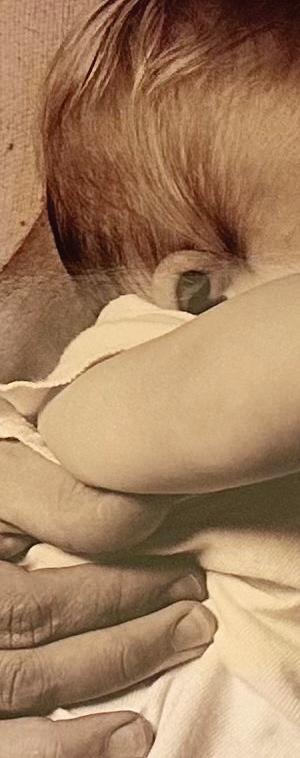
• Pick a theme. Here are a few from the actual show: camp, busted, adventure, gratitude, celebration, school, beginnings.
• Assign someone as the timer. The clock starts when the story begins. A warning is given at 4 minutes. A DONE bell is given at 6 minutes.
• Anyone who wants to tell a story puts their name in a hat. Pull names to choose which storyteller starts and who goes next.
• Start the show! Most shows are limited to 10 storytellers and take a break after the first five.
Your homemade Moth can include just the storytelling or you can make it a real Moth Story SLAM-style challenge. To do so, pick three judges. (Make sure at least two are kids!) They get to vote on each story using a scale of 1-10. Was the story on time? Was it on the theme? Was it told well? The story with the most points is the winner.
Grown: A podcast based on The Moth
The Moth Radio Hour often runs stories with mature content, although most are fine for kids middle school age and up. As I said, listening has led to some doozy conversations. However, the makers of The Moth recently launched the


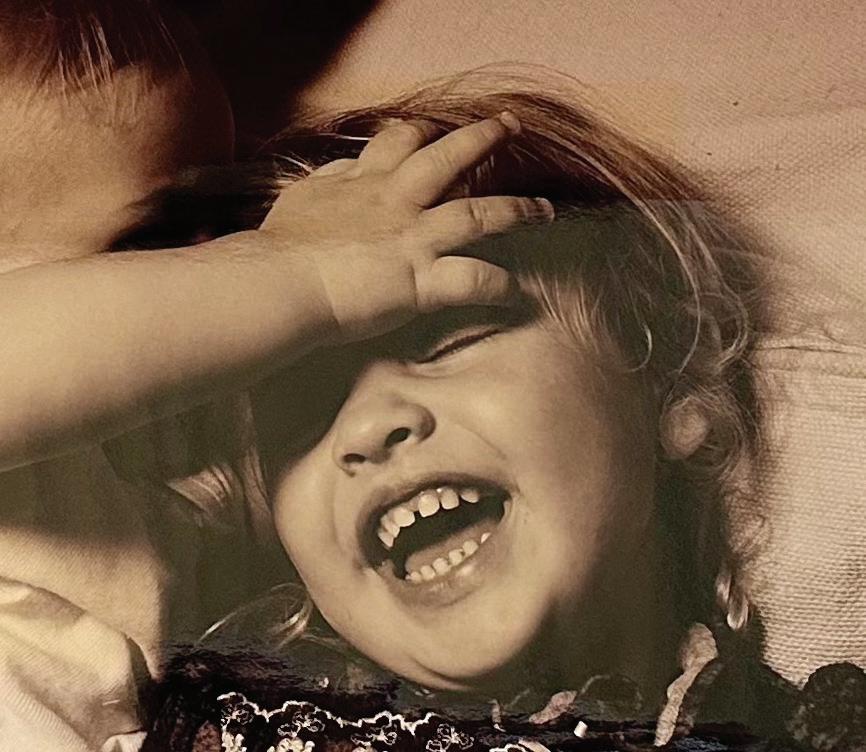

As told by Cheryl Murfin at a Moth StorySLAM
Whenmy daughter Madeleine was born back in the day before Amazon delivered nipple shields, nursing bras, and groceries to your doorstep, the sage women who surrounded me — my midwife, my mother, my grandmother, my aunt, my good friend Susan — all admonished me to stay in bed and take it easy for at least two weeks.
I did not listen.
Somehow, I got it in my head around day five or 10 that I needed to go to the grocery store several miles from my house. I needed to 1) get nursing bras to accommodate my exploding chest and 2) buy groceries, even though my mother had filled the pantry, the refrigerator, and the freezer.
I waited until everyone left the house, bundled up the baby, and drove to the store. Or floated. It is unclear to me even today.
With the baby in her car seat in the shopping basket, I wandered aimlessly down the aisles, randomly pulling useful things off the shelves: evaporated milk, marshmallows, and, for some reason I can’t imagine, pickling spice. I must have forgotten about the bras.
As I checked out, I felt a sense of pride, a confident new mom taking care of business. I smiled widely as two elderly ladies behind us cooed at my beautiful daughter — and pooh-poohed when one tenderly asked, “Shouldn’t you be in bed, honey?” . . .
To

Hibulb Cultural Center
HibulbCulturalCenter.org
360-716-2600
6410 23rd Ave NE, Tulalip, WA 98271
The Hibulb Cultural Center & Natural History Preserve is an interactive learning center, sharing the culture of the Tulalip Tribes. We feature a main and temporary exhibit, interactive long house, two classrooms, a research library, and gift shop.
Guided tours, interactive demonstrations, group rates, and private rentals are available. We also host monthly kid’s crafts, kid’s book and author events, and storytelling events. We have something for everyone, and fun for all ages!

hear and read the rest of the story:

theatre camps and classes all winter long!
FOR AGES 4 - 18




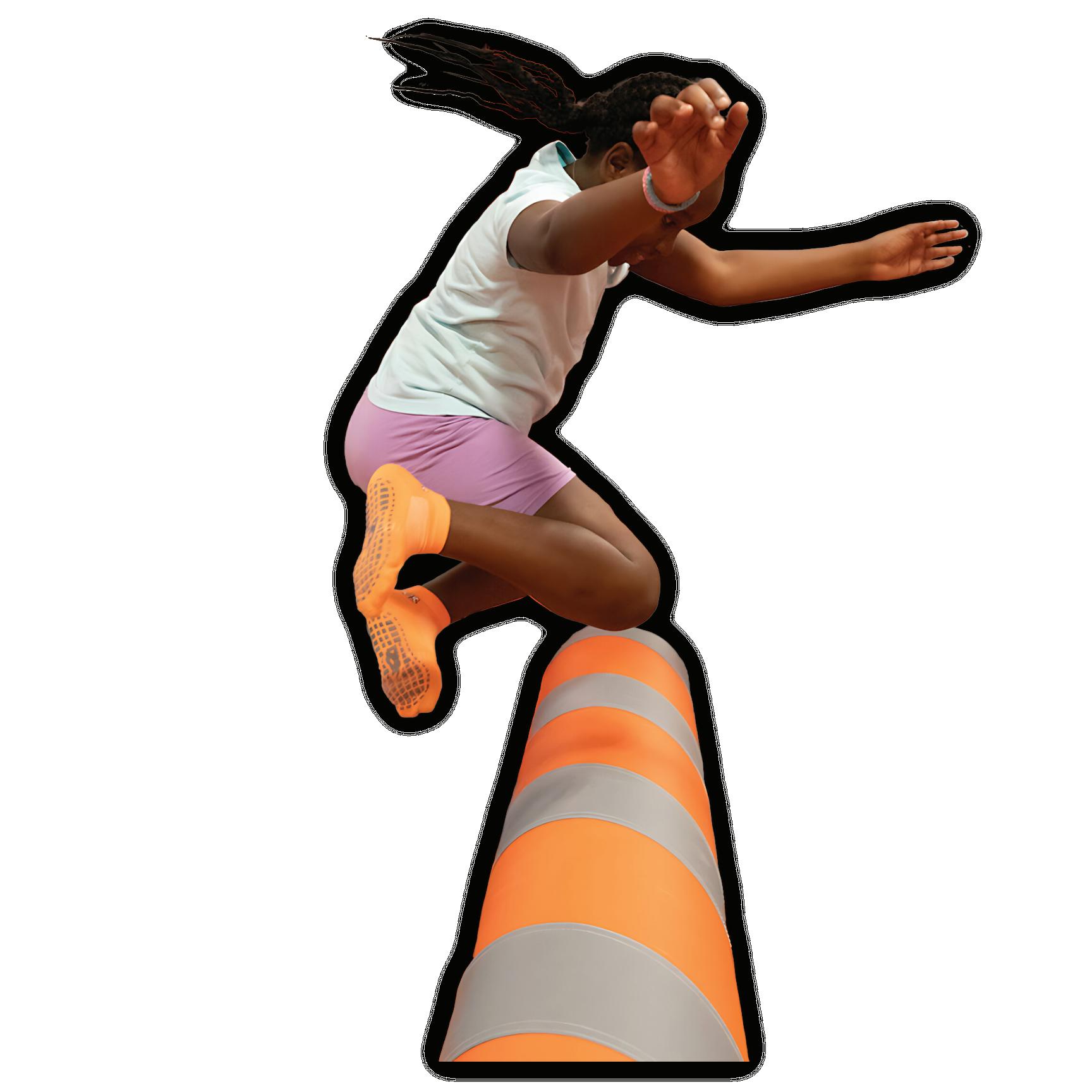


Grown podcast. As its creators describe it, Grown is about “the nebulous, the liminal, the just plain weird time between those awkward teenage years and adulthood.”
Grown is a great listen for family members of all ages and a real eye-opener for parents who will learn quite a bit about what it’s like to be a tween or teen today.
The Moth has also curated a list of stories told by kids for use in classrooms. The themes include Hot Wheels, Pool Party, The Prom, and My Grandfather’s Shoes. Listen at 3themoth.org/education/stories
See The Moth in Seattle



The Moth holds monthly StorySLAMs in various venues around Seattle. Moth StorySLAMS have no minimum age, but some venues do, so check before you go.
I recommend live events for mature kids aged 12 and up. Be warned some may be explicit and contain profanity. Themes in November and December include: Yes! Chef, Outgrown, Silver Linings, and Reunion. To find events, go to 3themoth.org/events and put Seattle in the finder.
What makes a good story? Here are a few tips from the experts at The Moth:
• Know your story “by heart” but not by rote memorization. Get into it with your voice, hand gestures, and sounds.
• Start with the action.
• Have stakes: “Why is what happens in the story important to you or your child storyteller?”
• Have a great first line that grabs attention. Or, as Moth educators put it:
NO: “So I was thinking about climbing this mountain. But then I watched a little TV and made a snack and took a nap and then my mom told me to wash the dishes . . .”
YES: “The mountain loomed over us. We only had our trail mix and snow boots, and we had to get someplace to start a fire before sundown or freeze to death for sure.”
• No fake accents. Imitating accents from a culture not your own rarely works and often offends.








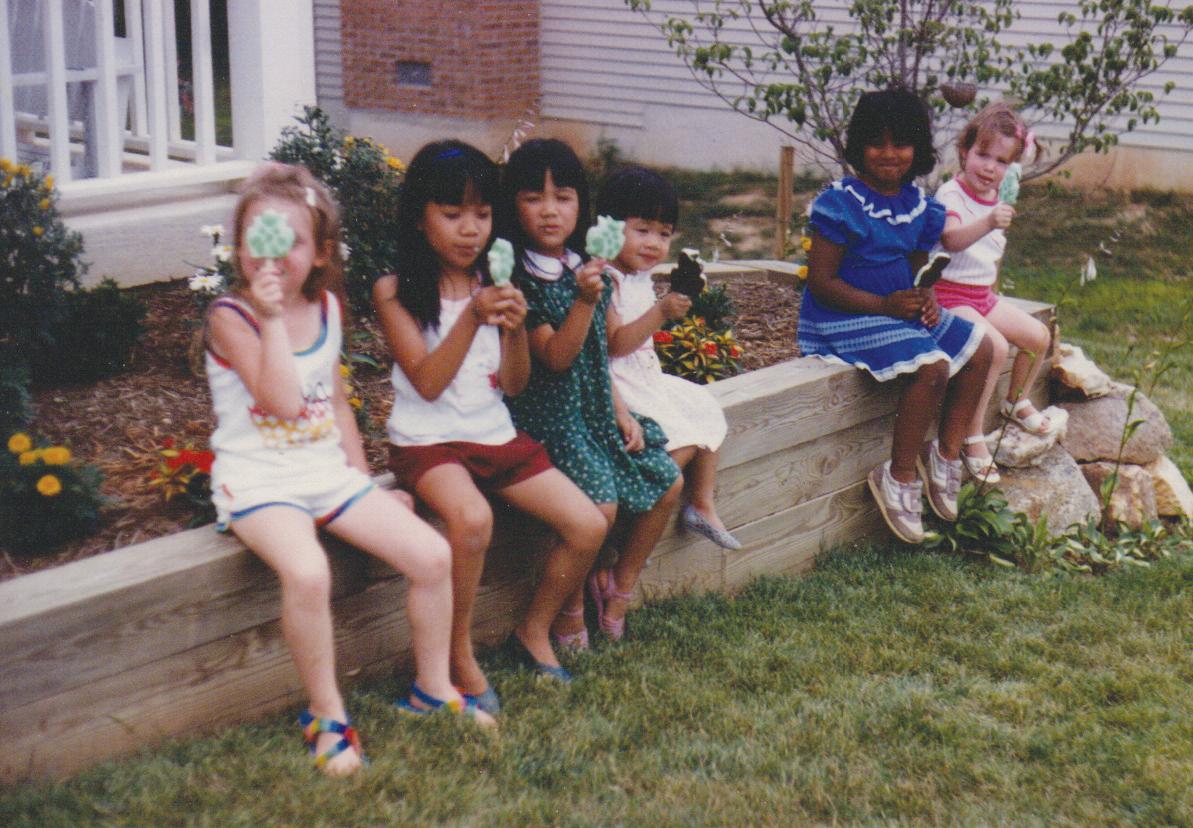


“Amma, tell me a story about when you were my age.”
My 10- and 12-year-old sons and I snuggle on the couch as I take them back in time, retracing memories stained into the fibers of my very being . . .
When I was a little girl, on hot summer days, I’d shove a wad of $1 bills into my pocket and ride my bike about two miles from where we lived down to a Safeway store in hopes of buying a box of popsicles to take home and share.
I’d ride carefully up and down our hilly streets, pass through rush-hour traffic (without a helmet, can you imagine?!), get to the store entrance, throw my bike down, and run inside to make my purchase. I’d always worry about how I needed to get home before the popsicles melted . . .
I’ve told my kids this story many times, and yet they still wait to hear if I made it back in time.
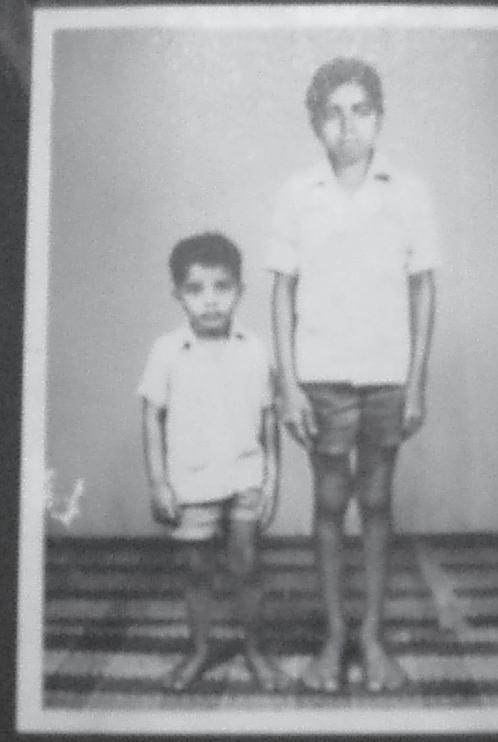
by JASMIN THANKACHEN
The oral record of a family Storytelling is the most powerful way to record and give children a glimpse into your own lived experiences, culture, traditions, and ancestry.
Often, my kids forget that my husband and I were once their age. They forget that underneath these tough exteri-
ors, house rules, and parental responsibilities, we too, experienced childhoods filled with joy, challenge, triumph, and trauma. When my husband and I share our life experiences, we teach our kids lessons, keep memories about loved ones alive, and deepen their connection to us and our families.
• Talk to relatives and ask questions. The best way to find and retell stories is to ask open-ended questions to explore milestone events or how they felt about an incident in their life.
• Share the joy and sadness. The tales of challenge and sadness are the ones that will teach children about overcoming obstacles and will highlight resilience.
• Record your story. Record your story through writing, photography, or a voice recording. I value the voice recording above other media because the voice is fleeting. We interviewed my husband’s parents about how they met, and it provides one of our fondest memories.
• Celebrate the holidays with storytelling. Family gatherings are a great time to pass down (and record) stories from generation to generation.
• Embrace silence. Oftentimes, one or more long quiet pauses will punctuate the best stories.

Little hints at why we do what we do
My children have five grandparents. One is my mom, who passed away when I was 17. There isn’t a day that passes that I don’t wonder what it would have been like to have her here. I keep her alive and in my children’s world by sharing stories about her.
Your grandmother was a nurse and always worked the afternoon shift. At 11 p.m., my dad would drag me to the car and drive an hour to Washington, DC, to pick her up after work.
I’d sprawl out in the back seat, rhythmically moving with the car’s acceleration, eventually rocking myself half asleep. When we all got home, my mom would open her maroon and gold pleather purse and pull out a small can of Dole pineapple juice and a few pieces of candy for me.
“Save some for your brother,” she’d tell me. It let me know she was thinking about us


As told by Anu Mathew
When I was about five or six years old, my father and I went to visit my grandparents in Prakannam. Their house is located in the mountains, and it was a long drive to get there, over bumpy roads with lots of twists and turns.
When we got there my dad had gone inside to visit with his parents while I stayed outside to play. The porch was filled with interesting things to look at. I could hear chickens clucking at the neighbor’s house as I skipped around the yard. I spotted two baskets filled with straw at the corner of the porch. They were wide woven baskets, the type that workers carried on their head to trans-
throughout her day . . .
Now, I too pick up a few candies or other treats and stash them in my purse, pulling them out the next time I see my kids. I’ll direct one child to save some for their sibling. Because they know my mother’s story, they know where this loving tradition comes from.
Research shows the benefits
Beyond family connection and passing down history, there are many reasons to engage in family storytelling. For example, according to a report from the University of Nevada Cooperative Exten-
Often, my kids forget that underneath these tough exteriors, house rules, and parental responsibilities, we too, experienced childhoods filled with joy, challenge, triumph, and trauma.
JASMIN THANKACHEN



port goods from one place to another. I decided to move them around and tip them a bit to see what was inside. Two black scorpions scampered out and I dropped the basket, stepping back quickly. Their tails were poised up and over their heads, ready to strike with their poisonous pincers . . .
To
hear and read the rest of the story:
sion, children who grow up with family storytelling view their family as stronger, have higher self-esteem, lower anxiety levels, fewer behavior problems, and can deal with stress better. Learning that your father got through a tough situation can give you courage.
A case in point: the stories from my husband Anu, who grew up in India. If you’ve heard of parents who tell tales of walking uphill both ways in six feet of snow to school, that’s the tenor of some of my husband’s storytelling with our boys.
Did I make it?
In the meantime, this story started with a story. You may be wondering, how did the popsicle story end?
I wound the plastic bag around my bike’s handlebars, securing my treasured treats, and hopped on my bike. I weaved between parking spaces and cars and then back through traffic. My knees hit the popsicle box every so often.
The box flew forward and then swung back again and again. I raced on my bike, sweat dripping down the side of my face. I turned left onto my street and up my driveway. Unwrapping the plastic, I cherished the taste of my cherry-flavored popsicle, its juice beginning to drip ever so slightly. I’d made it home just in the nick of time.




by MELODY IP
As the creators of the two-volume book project, “Campfire Stories: Tales from America’s National Parks” about America’s national parks, authors Ilyssa and Dave Kyu have heard many stories. That, in part, led the couple to create two sets of storytelling card decks as a follow-up to their books.
Published by Seattle-based Mountaineers Books, which also published the Kyus’ two books, the decks were designed to encourage storytelling in group settings, including around the family table.
Campfire Stories Deck is ideal for all ages, featuring prompts for personal stories or fictional tales. While many focus on our experiences with nature, other prompts touch on more personal connections.
storytelling process. The cards are divided into two groups: 25 characters (described with an adjective and noun) and 25 actions. The player chooses one card from each set and uses them as prompts to build a story. Don’t have access to these decks? Create your own prompts or start with the following:
• Tell a story about your first visit to a favorite park.
• Tell a story about an unexpected animal encounter.
• Tell a story about your favorite memory of the person sitting beside you.
• Try these combinations of character and action as a starting point:
A mellow marmot drains the ocean. What happens next?
A bossy butterfly spies a flickering light inside a cave. What happens next?


example, some parents encourage kids to pull cards to add to a single story continually. Others like to spin a collective tale as a family, each person adopting a character and action.
While it’s great to pull cards for storytelling around the fire, of course, they’re also great to distract kids while hiking or on a road trip or as the starting point for homespun bedtime stories.
“To create a way for kids to participate in storytelling, they don’t really need much because their imaginations are just so wild and wacky sometimes,” Ilyssa Kyu says. “Sometimes they just need a spark, so that’s where the idea of creating a deck specifically for kids came [from].”
The decks are available on Amazon, at 3Campfirestoriesbook.com, and through Mountaineers Books at 3mountaineers.org/ books. Find our full coverage of Campfire Stories and the article “Stories Around the Fire” online at 3Seattleschild.com
Campfire Stories Deck — For Kids! introduces a more imaginative
The authors encourage families to try different approaches with the cards and have heard from parents doing just that. For
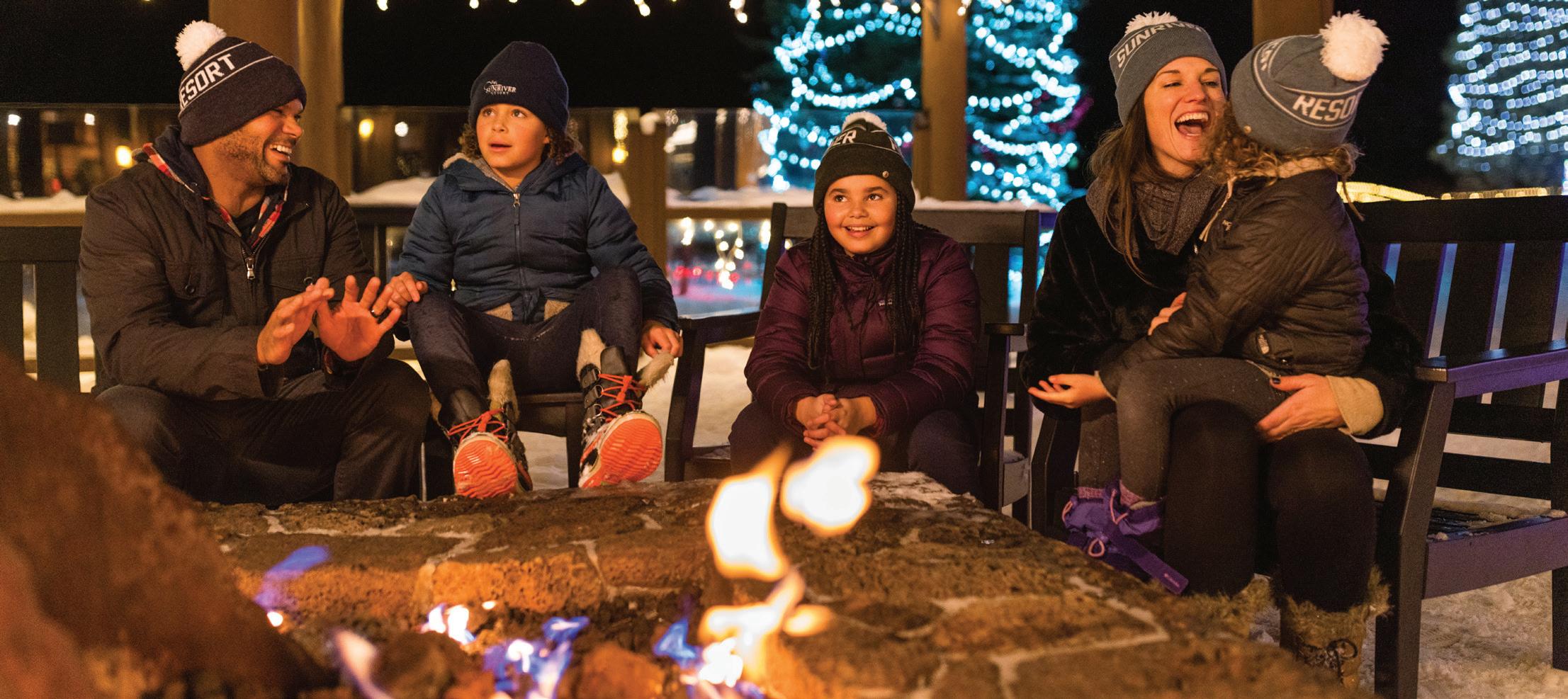



For over 50 years, Sunriver Resort in Central Oregon has been the destination to celebrate the holiday season. Unforgettable moments become cherished traditions as our 3,300 acres are transformed into a winter wonderland of family fun and snowy adventures. Join us in our daily festivities throughout this holiday season.
Book your holiday getaway at SunriverResort.com


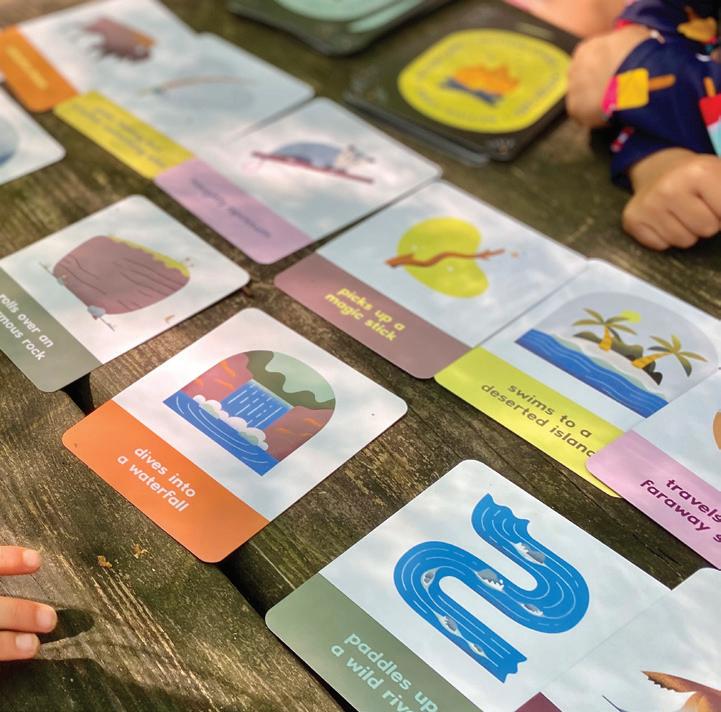

As told by Harvest Moon and printed in the book “Campfire Stories: Tales of America’s National Parks and Trails - Volume II”
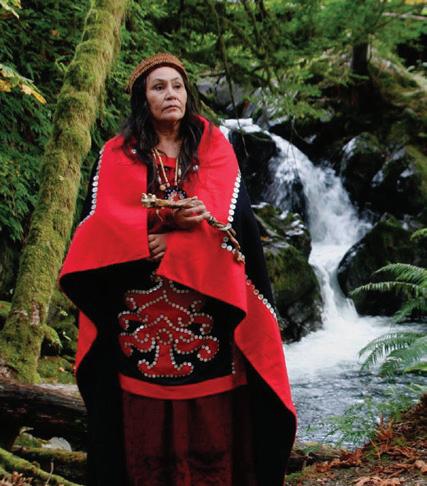

Long ago the women and the children had spent most of the day picking the sweet, tiny blackberries. As the sun was falling to the west, the women started gathering their baskets of berries and heading back to the village when they heard this rustling in the brush. As this rustling in the brush came closer, the women motioned with just their eyes to the children, who could run quickly enough and fast enough to run back to the long house. Now, for the children who were too young, they quickly picked them up, held them underneath their arms, took their heads, and held them close to the mother’s heart. When the small children heard the fast beating of the mother’s heart, they knew they had to be very quiet. The women cupped their hands and brought them behind their ears in order to hear as well as a deer. As the rustling of the brush came closer, they knew it wasn’t deer because deer has a jumping sound through the brush. They knew it wasn’t bear. Oh, bear love those little blackberries as much as we did! But as long as bear had no cub, bear would run away . . .
To hear and read the rest of the story:
Find support, connection, and resources for your family!
PEPS offers peer-support programs for expectant parents, parents of newborns, infants, or adolescents and teens, plus affinity groups. Families can connect on weekdays and weeknights in virtual and in-person groups.
Join a PEPS Group today!
Flexible Pricing program fees and financial assistance are available for all groups.
www.peps.org E Q M







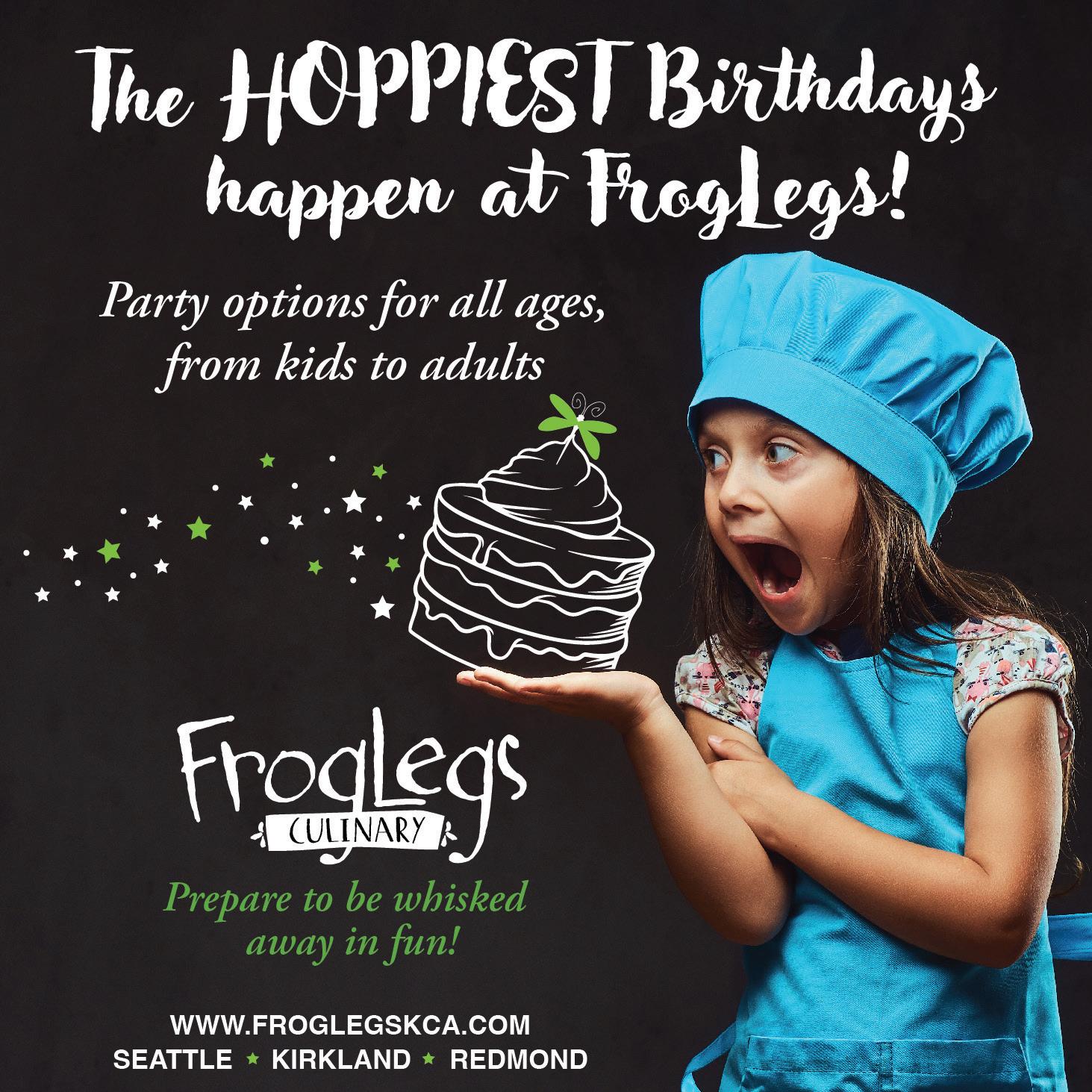
SEATTLE’S CHILD STAFF
Podcasts can be a powerful tool for storytelling. They allow kids and families to listen together and learn from stories from diverse cultures while in the car, around the table, or even on a walk.
Consider scheduling a weekly podcast listening session with your kids. Think radio plays of the 1920s as you grab the snacks, gather around the speaker, and hang on to every word. Discuss stories with your kids after listening. What were the stories about? What lessons did they hear? What’s one thing they learned?
Here’s a list of storytelling podcasts recommended by the nonprofit Common Sense Media. The national organization rates movies, TV shows, podcasts, books, and more and manages an extensive library of independent age-based ratings and reviews.
Circle Round: Curated folktales.
3wbur.org/podcasts/circleround Cultureverse: In these stories, kids from different racial and ethnic backgrounds meet a mythical creature connected to their culture.

3cultureverse.org

Girl Tales: Reimagining of traditional fairy tales, smashing the damsel in distress stereotype. 3girltalespodcast.com
Stories Podcast: Retellings of classic fairy tales. 3storiespodcast.com
Cuentos Increíbles: Bite-sized stories narrated in Spanish. Each episode lasts 5 to 10 minutes and encourages kids to develop creativity and good morals and values. 3cuentosincreibles.com

African Folktales with Miss Jo Jo: Diverse short stories originating in Africa, originally passed down through generations by word of mouth.
3abfc.com/shows/African-folktales
Once Upon a Crescent: Islamic bedtime stories for children, imparting Islamic morals to kids. 3mrshashimi.com

Stoopkid Stories: Follows seven young Black characters as they adventure and overcome different obstacles with friends, family, school, and community.
3stoopkidstories.com

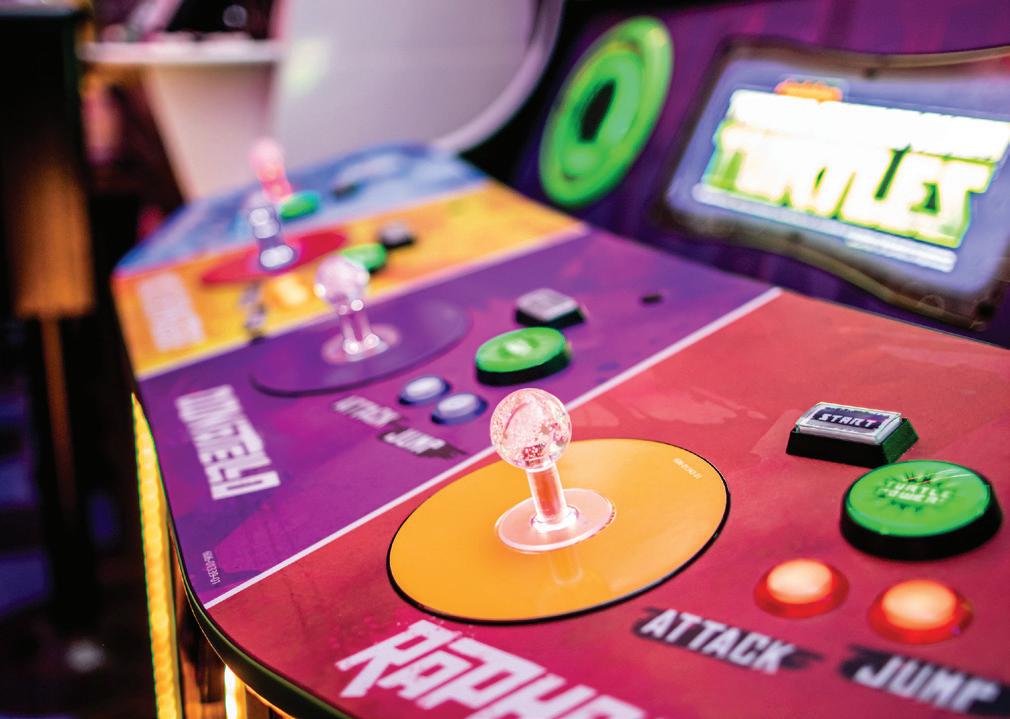

Enjoy one of the largest collections of classic arcade games in Washington, unlimited play with admission.

Conveniently located only 3 miles from SeaTac airport by the beautiful waterfront of Des Moines, WA.
"This place is Awesome. Well maintained and absolutely the best arcade in all of Seattle."
"Sooo much fun! Great environment for adults and kids! Reasonably priced, and the staff was absolutely awesome!"
"All the game play you like for one low rate. Friendly staff, great music while you game."
